Bhagat Singh
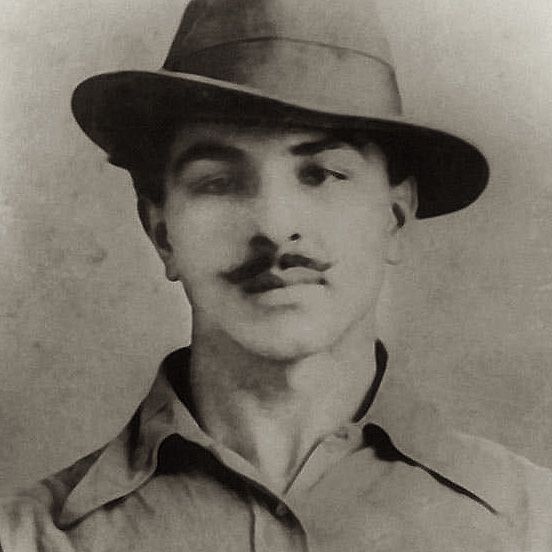
(1907-1931)
Bhagat Singh was born in Punjab, India (now Pakistan), on September 27, 1907, to a Sikh family deeply involved in political activities. He quit school at thirteen to devote his life to Indian independence. He became involved in several violent demonstrations of political defiance and was arrested several times. Singh was found guilty of killing a British police officer and hanged on March 23, 1931.

Early Years
Born on September 27, 1907, to a Sikh family in Punjab, India (now Pakistan), Bhagat Singh was the second son of Kishan Singh and Vidya Vati. The family was steeped in nationalism and involved in movements for independence. At the time of Bhagat's birth, his father was in jail for political agitation.
Young Firebrand
In 1926, Bhagat Singh founded the 'Naujavan Bharat Sabha (Youth Society of India) and joined the Hindustan Republican Association (later known as Hindustan Socialist Republican Association), where he met several prominent revolutionaries. A year later, Singh’s parents planned to have him married, a move he vehemently rejected, and he left school.
By this time, Bhagat Singh had become a person of interest to the police, and in May 1927, he was arrested for allegedly being involved in a bombing the previous October. He was released several weeks later and began to write for various revolutionary newspapers. After receiving reassurances from his parents that they wouldn’t force him to marry, he returned to Lahore.
Radical Revolutionary
In 1928, the British government held the Simon Commission to discuss autonomy for the Indian people. Several Indian political organizations boycotted the event because the Commission had no Indian representatives. In October, Bhagat Singh’s comrade, Lala Lajpat Rai led a march in protest against the Commission. Police attempted to disburse the large crowd, and during the melee, Rai was injured by the superintendent of police, James A. Scott. Rai died of heart complications two weeks later. The British government denied any wrongdoing.
To avenge his friend’s death, Bhagat Singh and two others plotted to kill the police superintendent, but instead shot and killed police officer John P. Saunders. Singh and his fellow conspirators escaped arrest despite a massive search to apprehend them.
In April 1929, Bhagat Singh and an associate bombed the Central Legislative Assembly in Delhi to protest implementation of the Public Safety Bill. The bombs they carried allegedly were not intended to kill but to scare (no one was killed, though there were some injuries). The bombers planned to get arrested and stand trial so they could further promote their cause.
Arrest and Trial
The actions of the young revolutionaries was soundly condemned by followers of Gandhi, but Bhagat Singh was delighted to have a stage on which to promote his cause. He offered no defense during the trial but disrupted the proceedings with rants of political dogma. He was found guilty and sentenced to life in prison.
Through further investigation, the police discovered the connection between Bhagat Singh and the murder of Officer Saunders and he was rearrested. While awaiting trial, he led a hunger strike in prison. Eventually, Singh and his co-conspirators were tried and sentenced to hang. He was executed on March 23, 1931. It is said that he kissed the hangman’s noose before it was placed around his neck. His death brought mixed emotions throughout India. Followers of Gandhi felt that he was too radical and hurt the quest for freedom, while his supporters considered him a martyr. Singh remains a significant, though controversial, figure in India’s independence movement.
QUICK FACTS
- Name: Bhagat Singh
- Birth Year: 1907
- Birth date: September 27, 1907
- Birth City: Punjab
- Birth Country: British India (now Pakistan)
- Gender: Male
- Best Known For: Considered to be one of the most influential revolutionaries of the Indian independence movement, Bhagat Singh gave his life for this cause.
- World Politics
- Astrological Sign: Virgo
- Dayanand Anglo Vedic High School And National College
- Nacionalities
- Interesting Facts
- At age 13, Bhagat Singh quit school to become a revolutionary.
- Occupations
- Political Activist
- Death Year: 1931
- Death date: March 23, 1931
- Death City: Lahore
- Death Country: British India (now Pakistan)
We strive for accuracy and fairness.If you see something that doesn't look right, contact us !
CITATION INFORMATION
- Article Title: Bhagat Singh Biography
- Author: Biography.com Editors
- Website Name: The Biography.com website
- Url: https://www.biography.com/political-figures/bhagat-singh
- Access Date:
- Publisher: A&E; Television Networks
- Last Updated: August 14, 2019
- Original Published Date: May 7, 2015
- Every tiny molecule of Ash is in motion with my heat I am such a Lunatic that I am free even in Jail.
- Any man who stands for progress has to criticize, disbelieve and challenge every item of the old faith.
- The sanctity of law can be maintained only so long as it is the expression of the will of the people.
Watch Next .css-smpm16:after{background-color:#323232;color:#fff;margin-left:1.8rem;margin-top:1.25rem;width:1.5rem;height:0.063rem;content:'';display:-webkit-box;display:-webkit-flex;display:-ms-flexbox;display:flex;}

Famous Political Figures

Julius Caesar
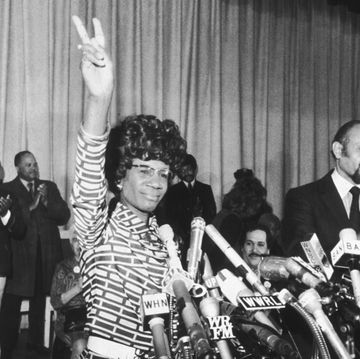
10 of the First Black Women in Congress

Kamala Harris

Deb Haaland
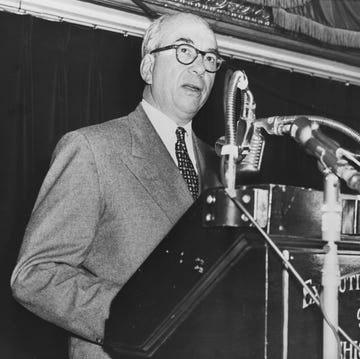
Why Lewis Strauss Didn’t Like Oppenheimer

Madeleine Albright

These Are the Major 2024 Presidential Candidates

Hillary Clinton

Indira Gandhi

Toussaint L'Ouverture

Vladimir Putin

Bhagat Singh
Born: September 28, 1907
Place of Birth: Village Banga, Tehshil Jaranwala, District Lyallpur, Punjab (in modern day Pakistan)
Parents: Kishan Singh (father) and Vidyavati Kaur (mother)
Education: D.A.V. High School, Lahore; National College, Lahore
Associations: Naujawan Bharat Sabha, Hindustan Republican Association, Kirti Kisan Party, Kranti Dal.
Political Ideology: Socialism; Nationalism; Anarchism; Communism
Religious Beliefs: Sikhism (childhood and teen); Atheism (youth)
Publications: Why I Am An Atheist: An Autobiographical Discourse, The Jail Notebook And Other Writings, Ideas of a Nation
Death: Executed on March 23, 1931
Memorial: The National Martyrs Memorial, Hussainwala, Punjab
Bhagat Singh is considered to be one of the most influential revolutionaries of Indian Nationalist Movement. He became involved with numerous revolutionary organizations and played an important role in the Indian National movement. He died a martyr at the age of just 23 years. Following his execution, on March 23, 1931, the supporters and followers of Bhagat Singh regarded him as a "Shaheed" (martyr).
Childhood and Early Life
Bhagat Singh was born on September 28, 1907, at Banga in Lyallpur district (now Pakistan) to Kishan Singh and Vidyavati. At the time of his birth, his father Kishan Singh, uncles Ajit and Swaran Singh were in jail for demonstrations against the Colonization Bill implemented in 1906. His uncle, Sardar Ajit Singh, was a proponent of the movement and established the Indian Patriots' Association. He was well-supported by his friend Syed Haidar Raza in organizing the peasants against the Chenab Canal Colony Bill. Ajit Singh had 22 cases against him and was forced to flee to Iran. His family was the supporter of the Ghadar party and the politically aware environment at home helped incite a sense of patriotism in the heart of young Bhagat Singh.
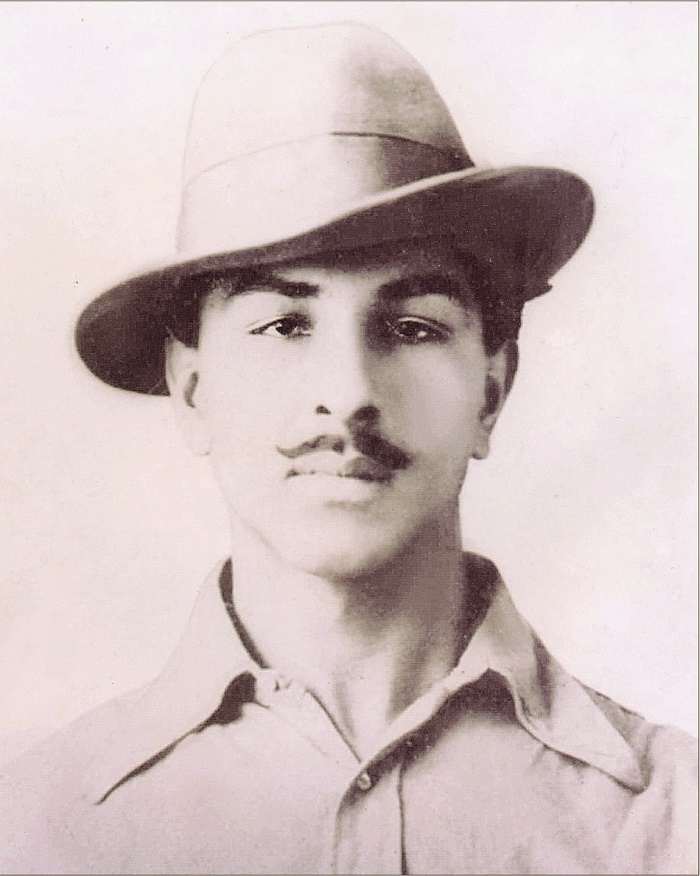
Bhagat Singh studied till the fifth class in his village school, after which his father Kishan Singh got him enrolled at the Dayanand Anglo Vedic High School in Lahore. At a very young age, Bhagat Singh started following Non-Cooperation Movement, initiated by Mahatma Gandhi. Bhagat Singh had openly defied the British and had followed Gandhi's wishes by burning the government-sponsored books. He even left the school to enrol at the National College in Lahore. Two incidents during his teen days shaped his strong patriotic outlook - the Jallianwala Bagh Masacre in 1919 and killing of unarmed Akali protesters at the Nankana Sahib in 1921. His family believed in the Gandhian ideology of non-violent approach to attain Swaraj and for a while Bhagat Singh also supported the Indian National Congress and the causes behind the Non-Cooperation Movement. Following the Chauri Chaura Incident , Gandhi called for the withdrawal of the Non-Cooperation movement. Unhappy with the decision, Bhagat Singh, isolated himself from Gandhi's nonviolent action and joined the Young Revolutionary Movement. Thus began his journey as the most prominent advocate of violent insurgency against the British Raj.
He was pursuing B.A. examination when his parents planned to have him married. He vehemently rejected the suggestion and said that, if his marriage was to take place in Slave-India, my bride shall be only death."
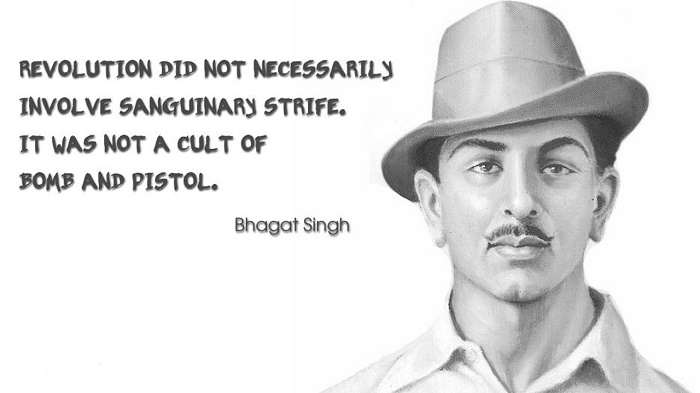
In March 1925, inspired by European nationalist movements, the Naujawan Bharat Sabha was formed with Bhagat Singh, as its secretary. Bhagat singh also joined the Hindustan Republican Association (HRA), a radical group, which he later rechristened as the Hindustan Socialist Republican Association (HSRA) along with fellow revolutionaries Chandrashekhar Azad and Sukhdev. He returned to his home in Lahore after assurances from his parents that he would not be compelled to get married. He established contact with the members of the Kirti Kisan Party and started contributing regularly to its magazine, the "Kirti". As a student, Bhagat Singh was an avid reader and he would read up about European nationalist movements. Inspired by the writings of Friedrich Engels and Karl Marx, his political ideologies took shape and he became more inclined towards a socialist approach. He also wrote in newspapers like “Veer Arjun” "under several pseudonyms.
National Movement & Revolutionary Activities
Initially, Bhagat Singh’s activities were limited to writing corrosive articles against the British Government, printing and distributing pamphlets outlining principles of a violent uprising, aimed at overthrowing the Government. Considering his influence on the youth, and his association with the Akali movement, he became a person of interest for the government.The police arrested him in a bombing case that took place in 1926 in Lahore. He was released 5 months later on a 60,000 rupees bond.
On 30 October 1928, Lala Lajpat Rai led an all-parties procession and marched towards the Lahore railway station to protest against the arrival of the Simon Commission. The police resorted to a brutal lathi charge to thwart the advancement of the protesters. The confrontation left Lala Lajpat Rai with severe injuries and he succumbed to his injuries on November17, 1928. As a revenge for the death of Lala Lajpat Rai, Bhagat Singh and his associates plotted the assassination of James A. Scott, the Superintendent of Police, believed to have ordered the lathi charge. The revolutionaries, mistaking J.P. Saunders, an Assistant Superintendent of Police, as Scott, killed him instead. Bhagat Singh quickly left Lahore to escape his arrest. To avoid recognition, he shaved his beard and cut his hair, a violation of the sacred tenets of Sikhism.
In response to the formulation of Defence of India Act, the Hindustan Socialist Republican Association planned to explode a bomb inside the assembly premises, where the ordinance was going to be passed. On April 8 1929, Bhagat Singh and Batukeshwar Dutt threw a bomb onto the corridors of the assembly, shouted 'Inquilab Zindabad!' and threw pamphlet outlining their missive into the air. The bomb was not meant to kill or injure anyone and therefore it was thrown away from the crowded place, but still several council members were injured in the commotion. Following the blasts both Bhagat Singh and Batukeshwar Dutt courted arrest.
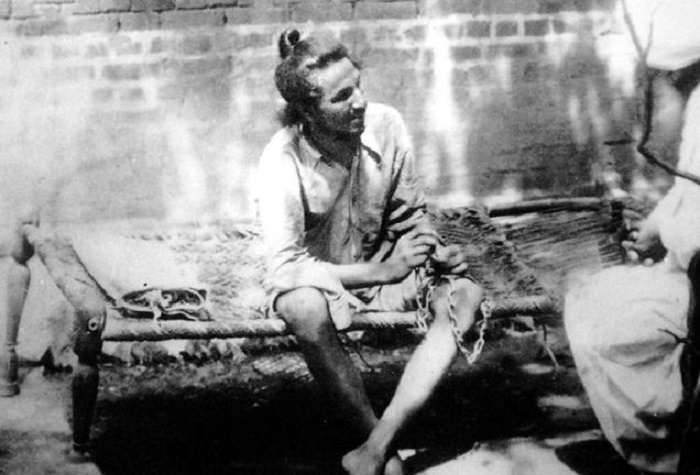
1929 Assembly Incident Trial
The dramatic demonstration of protest was met with widespread criticisms from the political arena. Singh responded – “Force when aggressively applied is 'violence' and is, therefore, morally unjustifiable, but when it is used in the furtherance of a legitimate cause, it has its moral justification.”
Trial proceedings commenced in May where Singh sought to defend himself, while Batukeshwar Dutt was represented by Afsar Ali. The court ruled in favour of a life sentence citing malicious and unlawful intent of the explosions.
Lahore Conspiracy Case & Trial
Soon after the sentencing, the police raided the HSRA bomb factories in Lahore and arrested several prominent revolutionaries.Three individuals, Hans Raj Vohra, Jai Gopal and Phanindra Nath Ghosh turned approver for the Government which led to a total of 21 arrests including those of Sukhdev, Jatindra Nath Das and Rajguru. Bhagat Singh was re-arrested for the Lahore Conspiracy case, murder of Assistant Superintendent Saunders and bomb manufacturing.
Trial started against 28 accused in a special session court presided over by Judge Rai Sahib Pandit Sri Kishen, on July10, 1929.
Meanwhile, Singh and his fellow inmates declared an indefinite hunger strike in protest of the prejudiced difference in treatment of the white versus native prisoners and demanded to be recognised as ‘political prisoners’. The hunger strike received tremendous attention from the press and gathered major public support in favour of their demands. Death of Jatindra Nath Das, after 63 days long fast, led to the negative public opinions intensifying towards the authorities. Bhagat Singh finally broke his 116-day fast, on request of his father and Congress leadership, on October 5, 1929.
Owing to the slow pace of the legal proceedings, a special tribunal consisting of Justice J. Coldstream, Justice Agha Hyder and Justice G. C. Hilton was set up on the directives of the Viceroy, Lord Irwin on 1 May 1930. The tribunal was empowered to proceed without the presence of the accused and was a one-sided trial that hardly adhered to the normal legal rights guidelines.
The tribunal delivered its 300-page judgement on 7 October 1930. It declared that irrefutable proof has been presented confirming the involvement of Singh, Sukhdev and Rajguru in the Saunders murder. Singh admitted to the murder and made statements against the British rule during the trial. They were sentenced to be hanged till death.
On March 23, 1931, 7:30 am, Bhagat Singh was hanged in Lahore Jail with his comrades Rajguru and Sukhdev. It is said that the trio proceeded quite cheerfully towards the gallows while chanting their favourite slogans like “Inquilab Zindabad” and “Down with British Imperialism”. Singh and his peers were cremated at Hussainiwala on the banks of Sutlej River.
Bhagat Singh’s Thoughts & Opinions
From a very young age patriotism had taken its seed in Bhagat Singh’s conscience. He grew up to appreciate nationalism and crave a British-free independent India. Extensive reading of European literature propelled him towards forming a socialist outlook strongly desiring a democratic future for his beloved country. Although born a Sikh, Bhagat Singh veered towards Atheism after witnessing several Hindu-Muslim riots and other religious outbreaks. Singh believed that something as precious as Independence can only be achieved by a thorough cleansing of the exploitative nature of imperialism. He opined that such change can only be brought forwardby means of an armed revolution, in similar lines to the Bolshevik Revolution in Russia. He introduced the slogan “Inquilab Zindabad” which sort of transformed into the war cry of the Indian Independence movement.
Popularity & Legacy
Bhagat Singh, his intense patriotism coupled with cultivated idealism, made him an ideal icon for the youth of his generation. Through his written and vocal admonition of the British Imperial Government, he became the voice of his generation. His vehement departure from the Gandhian non-violent route to Swaraj has often been criticized by many, yet through the fearless embracing of martyrdom he inspired hundreds of teens and youths to join the freedom struggle wholeheartedly. His eminence in current times is evident from the fact that Bhagat Singh was voted as the Greatest Indian, ahead of Subhash Chandra Bose and Mahatma Gandhi, in a poll conducted by India Today in 2008.
Bhagat Singh in Popular Culture
The inspiration that Bhagat Singh still ignites within the soul of Indians can be felt in the popularity of the films and theatrical adaptations on his life. Several films like “Shaheed” (1965) and “The Legend of Bhagat Singh” (2002) were made on the life of 23-year old revolutionary. Popular songs like the “Mohe rang de basanti chola” and “Sarfaroshiki Tamanna” associated with Bhagat Singh are still relevant in inspiring patriotic emotions in the Indians. Numerous books, articles and papers have been written about his life, ideologies and legacy. Bhagat Singh is quite popular on social media sites as well. On the video sharing website YouTube, you can find several videos, including Life Story of Bhagat Singh , on the life of the firebrand revolutionary .

Talk to our experts
1800-120-456-456
- Bhagat Singh Biography

About Bhagat Singh
Bhagat Singh was born on September 27, 1907, in the village of Banga near Lyallpur district in Punjab, British India. He was an Indian freedom fighter who is considered to be one of the most influential revolutionaries of the Indian independence movement. Bhagat Singh joined the Hindustan Republican Association (HRA) at a young age and became involved in revolutionary activities. He participated in several acts of sabotage against British institutions, including an attempt to bomb the Central Legislative Assembly in Delhi. In 1929, he and two other activists were convicted of assassinating John Saunders, a British police officer. Singh was executed by hanging on March 23, 1931, at Lahore jail at the age of 23. Despite his short life, Bhagat Singh left a lasting legacy in the struggle for Indian independence. He is revered by many as a martyr and symbol of resistance to British colonialism in India. His example continues to inspire new generations of activists worldwide.
Why is it Important to read Bhagat Singh's Biography?
Bhagat Singh's life is an inspiration to all those who fight for justice and against oppression. He was a brave young man who dedicated his life to the struggle for Indian independence. His story is a reminder that even in the face of great adversity, it is possible to achieve victory. Bhagat Singh's biography provides insight into the mind of a revolutionary and offers encouragement to those who are fighting for change today. It is an important read for anyone interested in history, politics, or human rights activism. He was loved and respected by the people of India, who continue to honor his memory.
Bhagat Singh's life was cut short at a young age, but he left behind an enduring legacy that continues to inspire new generations around the world today. His story is unforgettable for anyone interested in history or human rights activism. He fought against oppression with all his might until his death at 23 years old, leaving behind a lasting impact on Indian society during its struggle for independence from British rule. Bhagat Singh Biography provides valuable insight into the mind of a revolutionary leader whose passion will live forever in history books worldwide. It belongs on every bookshelf next to biographies of other influential figures such as Mahatma Gandhi and Nelson Mandela. The importance of reading Bhagat Singh's biography cannot be overstated.
What are Some of the Key Events in Bhagat Singh's Biography?
Some of the key events in Bhagat Singh's biography include:
Born on September 27, 1907, in Banga
Joined Hindustan Republican Association (HRA) at a young age
Participated in several acts of sabotage against British institutions, including an attempt to bomb the Central Legislative Assembly.
How did Bhagat Singh influence the Indian Independence Movement?
Bhagat Singh had a great impact on the Indian independence movement due to his participation in various activities that led India towards its freedom from colonial rule. His involvement with revolutionary groups resulted in him being jailed for various crimes, but he continued his activism even behind bars through writing and publishing newspapers aimed at spreading nationalist sentiments among people all over India. He was executed by hanging when he was 23 years old after leading an unsuccessful plot to kill a British police officer who ordered a lathi charge on Lala Lajpat Rai, who was protesting colonial policies at the time. This murder had a major impact on Indian society and brought Bhagat Singh to national attention as a revolutionary hero of India's independence movement.
What is included in Bhagat Singh's biography?
Bhagat Singh's biography covers his upbringing in Punjab, his involvement with revolutionary groups throughout his teenage years, and the significant impact he had on India's struggle for independence. It details his trial when he was charged with the murder of John P. Saunders, a British police officer, as well as his life in prison leading up to his execution at Lahore jail when he was 23 years old. Throughout it all, Bhagat Singh remained strong in defense of Indian independence even in the face of great adversity.
How is Bhagat Singh's Biography useful?
Bhagat Singh's biography is both informative and entertaining to read; full of events that shaped him into becoming an influential figure during India's push for independence from British rule. While it is useful for researchers and historians, anyone interested in politics or Indian history can benefit from reading an in-depth account of the life of a revolutionary icon whose passion lives on through his legacy and impact on India's independence movement.
Some of Bhagat Singh's Most Notable Accomplishments include:
Joining the Hindustan Republican Association (HRA) at a young age and becoming involved in revolutionary activities
Participating in several acts of sabotage against British institutions, including an attempt to bomb the Central Legislative Assembly in Delhi
Being convicted of assassinating John Saunders, a British police officer, for which he was hanged at the age of 23
Being elected as the president of the HSRA shortly before being executed.

FAQs on Bhagat Singh Biography
1. What is the Best Part about Bhagat Singh's Biography?
The best thing about Bhagat Singh's biography is that it details his life in prison, trial, and execution by hanging. It is a fascinating read for anyone interested in Indian history or acti
2. Why is Bhagat Singh's Biography inspiring?
Bhagat Singh's biography inspires people all over the world because of his passion for freeing India from colonial rule through revolutionary activity despite being imprisoned on multiple occasions even before he was hanged at the age of 23. This makes him stand out as an influential figure within the Indian independence movement who remains relevant to this day through publications about his life and impact on India's struggle for independence from British colonial rule in the early 20th century.
3. How does Bhagat Singh's Biography educate Readers?
Through reading Bhagat Singh's biography, readers are educated about the Indian independence movement as it gained momentum in the early 20th century. In particular, they can learn what happened to India as a result of British rule and how people like Bhagat Singh fought for Indian freedom from colonial rule through revolutionary measures.
4. What is a Summary of Bhagat Singh's Biography?
The summary of Bhagat Singh's biography is a brief overview of his life and impact on India's struggle for independence from British colonial rule in the early 20th century. It covers everything from Bhagat Singh joining revolutionary groups, participating in acts of sabotage against various British institutions, being hanged as a result of assassinating John Saunders, to speaking up about social inequality as a result of colonialism even while he was imprisoned.
5. In What Order should I read Bhagat Singh's Biography?
To set the stage for reading an in-depth account about the life and activism of Bhagat Singh, it is best to start by familiarizing yourself with India's push for independence during British colonial rule through our section that details this topic thoroughly, followed by an article about the British Raj and how it impacted the Indian people. Once you have a basic understanding of India's struggle for independence from British rule, you can begin reading Bhagat Singh's Biography to learn about his life as a revolutionary figure during this time period.
Bhagat Singh
| Bhagat Singh ਭਗਤ ਸਿੰਘ بھگت سنگھہ | |
|---|---|
| Bhagat Singh at the age of 21 | |
| Place of birth: | Lyallpur, Punjab, British India |
| Place of death: | , Punjab, British India |
| Movement: | Indian Independence movement |
| Major organizations: | Naujawan Bharat Sabha, Kirti Kissan Party and Hindustan Socialist Republican Association |
Bhagat Singh (Punjabi: ਭਗਤ ਸਿੰਘ بھگت سنگھہ, IPA: [pə˨gət̪ sɪ˦ŋg] ) (September 28, [1] 1907–March 23, 1931) fought an Indian freedom fighter, considered one of the most famous revolutionaries of the Indian independence movement. For that reason, Indians often refer to him as Shaheed Bhagat Singh (the word shaheed means " martyr "). Many believe him one of the earliest Marxists in India. [2] He had been one of the leaders and founders of the Hindustan Socialist Republican Association (HSRA).
Born to a family which had earlier been involved in revolutionary activities against the British Raj in India, Bhagat Singh, as a teenager, having studied European revolutionary movements, had been attracted to anarchism and communism . [3] He became involved in numerous revolutionary organizations. He quickly rose in the ranks of the Hindustan Republican Association (HRA) and became one of its leaders, converting it to the HSRA. Singh gained support when he underwent a 63-day fast in jail, demanding equal rights for Indian and British political prisoners. Hanged for shooting a police officer in response to the killing of veteran social activist Lala Lajpat Rai, his legacy prompted youth in India to begin fighting for Indian independence and also increased the rise of socialism in India. [4]
Bhagat Singh, given the title "Shaheed" or martyr , grew up at an exciting time for the Independence movement. During his life time, Mahatma Gandhi developed his non-violence philosophy to deal with Indian independence. His philosophy, based in Hindu thought and practice, had compatibility with Buddhism , Jainism , Islam , and Christianity. Bhagat Singh joined Gandhi as a boy, putting into practice Gandhi's non violent resistance teaching. Whereas Gandhi went the way of the spiritual teachings of Hinduism , Buddha , and Christ , Singh went the way of Marx , Engels , and violence . Singh, an atheist and a Marxists , rejected Gandhi's commitment to God and peaceful resistance.
- 1 Early life
- 2.1 Lala Lajpat Rai's death and the Saunders murder
- 2.2 Bomb in the assembly
- 2.3 Trial and execution
- 3.1 Marxism/Leninism
- 3.2 Atheism
- 4.1 Mahatma Gandhi
- 4.2 Spurious book
- 5.1 Indian independence movement
- 5.2 Modern day legacy
- 6 Criticism
- 7 Quotations
- 10 References
- 11 External links
That Bhagat Singh felt angry about British colonial rule is not surprising. Most Indians hated British rule. If Singh could have over thrown the British colonial government and installed his own brand of communism and atheism , India would have been cast into the dark ages. Instead, India by and large rejected Singh's approach and embraced Gandhi's. Due to that wise national decision, India is a vibrant, rapidly developing, spiritually directed nation of one billion people.
Bhagat Singh had been born into a Sandhu family to Sardar Kishan Singh Sandhu and Vidyavati in the Khatkar Kalan village near Banga in the Lyallpur district of Punjab on September 28, 1907. Singh's given name of Bhagat meant "devotee." His had been a patriotic Sikh family, participating in numerous movements supporting independence of India. [5] The Hindu reformist Arya Samaj influenced his father. His uncles, Ajit Singh and Swaran Singh both took part in the Ghadr Party led by Kartar Singh Sarabha. Ajit Singh fled to Iran to avoid pending legal cases against him while Swaran Singh died from hanging . [6]
As a child, the Jalianwala Bagh Massacre that took place in Punjab in 1919 deeply affected him. [7] When Mahatma Gandhi started the Non-Cooperation Movement in 1920, he became an active participant at the age of 13. He had great hopes that Gandhi would bring freedom in India. But he felt disappointed when Gandhi called off that movement following the Chauri Chaura riot in 1922. At that point he had openly defied the British and had followed Gandhi's wishes by burning his government-school books and any British-imported clothing. In 1923, Bhagat famously won an essay competition set by the Punjab Hindi Sahitya Sammelan. That grabbed the attention of members of the Punjab Hindi Sahitya Sammelan including its General Secretary Professor Bhim Sen Vidyalankar. At that age, he quoted famous Punjabi literature and discussed the Problems of the Punjab. He read a lot of poetry and literature written by Punjabi writers, Allama Iqbal, an Indian freedom fighter from Sialkot became his favorite poet. [8]
In his teenage years, Bhagat Singh studying at the National College in Lahore , running away from home to escape early marriage , and became a member of the organization Naujawan Bharat Sabha (Translated to 'Youth Society of India'). In the Naujawan Bharat Sabha, Singh and his fellow revolutionaries grew popular amongst the youth. He also joined the Hindustan Republican Association at the request of Professor Vidyalankar, then headed by Ram Prasad Bismil and Ashfaqulla Khan. He may have had knowledge of the Kakori train robbery. He wrote for and edited Urdu and Punjabi newspapers published from Amritsar. [9] In September 1928, a meeting of various revolutionaries from across India had been called at Delhi under the banner of the Kirti Kissan Party. Bhagat Singh served as the secretary of the meeting. He carried out later revolutionary activities as a leader of that association. The capture and hanging of the main HRA Leaders necessitated his and Sukhdev quick promotion to higher ranks in the party. [10]
Later Revolutionary activities
Lala lajpat rai's death and the saunders murder.
The British government created a commission under Sir John Simon to report on the current political situation in India in 1928. The Indian political parties boycotted the commission because Indians had been excluded from representation, protests erupting throughout the country. When the commission visited Lahore on October 30, 1928, Lala Lajpat Rai led the protest against the commission in a silent non-violent march, but the police responded with violence. The police chief beat Lala Lajpat Rai severely and he later succumbed to his injuries. Bhagat Singh, an eyewitness to that event, vowed to take revenge. He joined with other revolutionaries, Shivaram Rajguru, Jai Gopal and Sukhdev Thapar, in a conspiracy to kill the police chief. Jai Gopal had been assigned to identify the chief and signal for Singh to shoot. In a case of mistaken identity, Gopal signaled Singh on the appearance of J. P. Saunders, a Deputy Superintendent of Police. Thus, Singh shot Saunders, instead of Scott. [11] He quickly left Lahore to escape the police. To avoid recognition, he shaved his beard and cut his hair, a violation of one of the sacred tenets of Sikhism .
Bomb in the assembly
In the face of actions by the revolutionaries, the British government enacted the Defence of India Act to give more power to the police. The Act, defeated in the council by one vote, purposed to combat revolutionaries like Bhagat Singh. The Act later passed under the ordinance that claimed the Act served the best interest of the public. In response to that act, the Hindustan Socialist Republican Association planned to explode a bomb in the assembly where the ordinance would be passed. Originally, Azad attempted to stop Bhagat Singh from carrying out the bombing; the remainder of the party forced him to succumb to Singh's wishes, deciding that Bhagat Singh and Batukeshwar Dutt, another revolutionary, would throw the bombs in the assembly.
On April 8, 1929, Singh and Dutt threw bombs onto the corridors of the assembly and shouted " Inquilab Zindabad! " ("Long Live the Revolution!"). A shower of leaflets stating that it takes a loud voice to make the deaf hear followed. The bomb neither killed nor injured anyone; Singh and Dutt claimed they deliberately avoided death and injury, a claim substantiated both by British forensics investigators who found that the bomb too weak to cause injury, and the bomb had been thrown away from people. Singh and Dutt gave themselves up for arrest after the bomb. [12] He and Dutt received life sentences to 'Transportation for Life' for the bombing on June 12, 1929.
Trial and execution
Shortly after his arrest and trial for the Assembly bombing, the British came to know of his involvement in the murder of J. P. Saunders. The courts charged Bhagat Singh, Rajguru, and Sukhdev with the murder . Bhagat Singh decided to use the court as a tool to publicize his cause for the independence of India. He admitted to the murder and made statements against the British rule during the trial. [13] The judge ordered the case carried out without members of the HSRA present at the hearing. That created an uproar amongst Singh's supporters as he could no longer publicize his views.
While in jail, Bhagat Singh and other prisoners launched a hunger strike advocating for the rights of prisoners and under trial. They struck to protest better treatment of British murderers and thieves than Indian political prisoners, who, by law, would receive better conditions. They aimed through their strike to ensure a decent standard of food for political prisoners, the availability of books and a daily newspaper, as well as better clothing and the supply of toilet necessities and other hygienic necessities. He also demanded political prisoners' exemption from forced labor or undignified work. [14] During that hunger strike that lasted 63 days and ended with the British succumbing to his wishes, he gained much popularity among the common Indians. Before the strike his popularity had been limited mainly to the Punjab region. [15]
Bhagat Singh also maintained a diary, eventually filling 404 pages, with notes relating to the quotations and popular sayings of various people whose views he supported; Karl Marx and Friedrich Engels held a prominent place. [16] The comments in his diary led to an understanding of the philosophical thinking of Bhagat Singh. [17] Before dying he also wrote a pamphlet entitled "Why I am an atheist," to counter the charge of vanity for rejecting God in the face of death.
On March 23, 1931, the British hanged Bhagat Singh in Lahore with his comrades Rajguru and Sukhdev. His supporters, who had been protesting against the hanging, immediately declared him as a shaheed or martyr. [18] According to the Superintendent of Police at the time, V.N. Smith, the time of the hanging had been advanced:
Normally execution took place at 8 A.M. , but it was decided to act at once before the public could become aware of what had happened…. At about 7 P.M. shouts of Inquilab Zindabad were heard from inside the jail. This was correctly interpreted as a signal that the final curtain was about to drop. [19]
Singh had been cremated at Hussainiwala on banks of Sutlej river. Today, the Bhagat Singh Memorial commemorates freedom fighters of India. [20]
Political Thoughts and Opinions
Marxism/leninism.
Bhagat Singh's political thought evolved gradually from Gandhian nationalism to revolutionary Marxism . By the end of 1928, he and his comrades renamed their organization the Hindustan Socialist Republican Association. He had read the teachings of Karl Marx , Friedrich Engels , and Vladimir Lenin and believed that, with such a large and diverse population, India could only survive properly under a socialist regime. Those ideals had been introduced to him during his time at the National College at Lahore and he believed that India should re-enact the Russian revolution . In the case that India rejected socialism, he believed that the rich would only get richer and the poor would only get poorer. That, and his militant methods, put him at odds with Gandhi and members of the Congress. He became the first socialist leader in India to make any gain. Even today, socialist leaders sometimes refer back to him as the founder of Indian socialism.
While in a condemned cell in 1931, he wrote a pamphlet entitled Why I am an Atheist in which he discussed and advocated the philosophy of atheism . That pamphlet arose as a counter to criticism by fellow revolutionaries for his failure to acknowledge religion and God while in a condemned cell, the accusation of vanity. He supported his own beliefs and claimed that he used to be a firm believer in The Almighty, but rejected the myths and beliefs that others held close to their hearts. In that pamphlet, he acknowledged that religion made death easier, but declared unproved philosophy a sign of human weakness. [21]
Bhagat Singh had been known to have an appreciation of martyrdom . Kartar Singh Sarabha had been his mentor as a young boy. [22] Many Indians consider Singh a martyr for acting to avenge the death of Lala Lajpat Rai, also considered a martyr. In the leaflet he threw in the Central Assembly on April 8, 1929, he stated that It is easy to kill individuals but you cannot kill the ideas. Great empires crumbled while the ideas survived. [23] After engaging in studies on the Russian Revolution , he wanted to die so that his death would inspire the youth of India to unite and fight the British Empire . [24]
While in prison, Bhagat Singh and two others had written a letter to the Viceroy asking him to treat them as prisoners of war and hence to execute them by firing squad rather than by hanging . Prannath Mehta visited him in the jail on March 20, four days before his execution, with a draft letter for clemency, but he declined to sign it. [25]
Conspiracy theories
Many conspiracy theories arose regarding Singh, especially the events surrounding his death.
Mahatma Gandhi
One theory contends that Mahatma Gandhi had an opportunity to stop Singh's execution but refused. That particular theory has spread among the public in modern times after the creation of modern films such as The Legend of Bhagat Singh, which portray Gandhi as someone strongly at odds with Bhagat Singh and supporting his hanging. [26] In a variation on that theory, Gandhi actively conspired with the British to have Singh executed. Both highly controversial theories have been hotly contested. Gandhi's supporters say that Gandhi too little influence with the British to stop the execution, much less arrange it. Furthermore, Gandhi's supporters assert that Singh's role in the independence movement posed no threat to Gandhi's role as its leader, and so Gandhi would have no reason to want him dead.
Gandhi, during his lifetime, always maintained a great admiration of Singh's patriotism , but that he simply disapproved of his violent methods. He also said that he opposed Singh's execution (and, for that matter, capital punishment in general) and proclaimed that he had no power to stop it. On Singh's execution, Gandhi said, "The government certainly had the right to hang these men. However, there are some rights which do credit to those who possess them only if they are enjoyed in name only." [27] Gandhi also once said, on capital punishment, "I cannot in all conscience agree to anyone being sent to the gallows. God alone can take life because He alone gives it."
Gandhi had managed to have 90,000 political prisoners—members of movements other than his Satyagraha movement—released under the pretext of "relieving political tension," in the Gandhi-Irwin Pact. According to a report in the Indian magazine Frontline, he did plead several times for the commutation of the death sentence of Bhagat Singh, Rajguru and Sukhdev, including a personal visit on March 19, 1931, and in a letter to the Viceroy on the day of their execution, pleading fervently for commutation, without knowing that the letter would be too late. [28]
Lord Irwin, the Viceroy, later said:
As I listened to Mr. Gandhi putting the case for commutation before me, I reflected first on what significance it surely was that the apostle of non-violence should so earnestly be pleading the cause of the devotees of a creed so fundamentally opposed to his own, but I should regard it as wholly wrong to allow my judgment to be influenced by purely political considerations. I could not imagine a case in which under the law, penalty had been more directly deserved. [29]
Spurious book
On October 28, 2005, K.S. Kooner's and G.S. Sindhra's book entitled, Some Hidden Facts: Martyrdom of Shaheed Bhagat Singh—Secrets unfurled by an Intelligence Bureau Agent of British-India [ sic ] released. The book asserted that Singh, Rajguru, and Sukhdev had been deliberately hanged in such a manner as to leave all three in a semi-conscious state, so that all three could later be taken outside the prison and shot dead by the Saunders family, a prison operation codenamed "Operation Trojan Horse." Scholars have expressed skepticism of the book's claims. [30]
Indian independence movement
Bhagat Singh's death had the effect that he desired and he inspired thousands of youths to assist the remainder of the Indian independence movement. After his hanging, youths in regions around Northern India rioted in protest against the British Raj .
Modern day legacy
The Communist Party of India (Marxist) itself acknowledges Bhagat Singh's contribution to Indian society [31] and, in particular, the future of socialism in India. To celebrate the centenary of his birth, a group of intellectuals have set up an institution to commemorate Singh and his ideals. [32]
Several popular Bollywood films have been made capturing the life and times of Bhagat Singh. Shaheed, released in 1965, starred Manoj Kumar as Singh. Two major films about Singh released in 2002, The Legend of Bhagat Singh and 23rd March 1931: Shaheed. The Legend of Bhagat Singh represents Rajkumar Santoshi's adaptation, in which Ajay Devgan played Singh and Amrita Rao featured in a brief role. Guddu Dhanoa directed 23 March 1931: Shaheed, starring Bobby Deol as Singh, with Sunny Deol and Aishwarya Rai in supporting roles.
The 2006 film Rang De Basanti (starring Aamir Khan) drew parallels between revolutionaries of Bhagat Singh's era and modern Indian youth. It covers Bhagat Singh's role in the Indian freedom struggle, revolving around a group of college students and how they each play the roles of Bhagat's friends and family.
The patriotic Urdu and Hindi songs, Sarfaroshi ki Tamanna ("the desire to sacrifice") and Mera Rang De Basanti Chola ("my light-yellow-colored cloak") with Basanti referring to the light-yellow color of the Mustard flower grown in the Punjab which is one color of the rehat meryada (code of conduct of the Sikh Saint-Soldier). These songs are largely associated with Bhagat Singh and have been used in a number of films related to him.
In September 2007 the governor of Pakistan's Punjab province announced that a memorial to Bhagat Singh will be displayed at Lahore museum . According to the governor “Singh was the first martyr of the subcontinent and his example was followed by many youth of the time." [33]
Both his contemporaries and people after his death criticized Bhagat Singh because of his violent and revolutionary stance towards the British, his opposition to the pacifist stance taken by the Indian National Congress and particularly Mahatma Gandhi . [34] The methods he used to make his point—shooting Saunders and throwing non-lethal bombs—stood in opposition to the non-violent non-cooperation used by Gandhi. The British accused him of having knowledge of the Kakori train robbery.
Bhagat Singh has also been accused of being too eager to die, as opposed to staying alive and continuing his movement. It has been alleged that he could have escaped from prison if he so wished, but he preferred that he die and become a legacy for other youths in India. Some lament that he may have done much more for India had he stayed alive. [35]

- Hindustan Socialist Republican Association
- Communist Party of India (Marxist)
- Sukhdev Thapar
- Chandrashekar Azad
- Udham Singh
- ↑ Tribune Chandigarh: In memory of Bhagat Singh
- ↑ Communist Party of India (Marxist)
- ↑ Revolutionary Democracy: Bhagat Singh and the Revolutionary Movement
- ↑ Reeta Sharma, Tribune India: What if Bhagat Singh had lived Retrieved February 12, 2009.
- ↑ Bharat Desam Biographies: Bhagat Singh
- ↑ Martyrdom of Sardar Bhagat Singh by Jyotsna Kamat . Cited by University of California Berkeley Library on South Asian History
- ↑ Bhagat Singh Documents Problems of the Punjab
- ↑ Jyotsna Kamat, Martyrdom of Sardar Bhagat Singh
- ↑ Jyotsna Kamat, Martyrdom of Sardar Bhagat Singh Retrieved February 12, 2009.
- ↑ Bhagat Singh Documents: Bhagat Singh and BK Dutt's Demands from the British Government
- ↑ Communist Party of India (Marxist): Bhagat Singh Remains Our Symbol of Revolution Retrieved February 12, 2009.
- ↑ Shahid Bhagat Singh: Jail Note Book of Shahid Bhagat Singh Retrieved February 12, 2009.
- ↑ Shahid Bhagat Singh: Bhagat Singh quotes from his jail note book
- ↑ CPIM: Bhagat Singh Memorial Day Observed Retrieved February 12, 2009.
- ↑ The Tribune India : Excerpts out of Martyrdom of Shaheed Bhagat Singh Retrieved February 12, 2009.
- ↑ Why I am an Atheist : Bhagat Singh 1931 . marxists.org . Retrieved February 12, 2009.
- ↑ Tribune India What if Bhagat Singh had lived
- ↑ Bhagat Singh Documents Leaflet thrown in the Central Assembly Hall, New Delhi . Retrieved February 12, 2009.
- ↑ Bharat Desam Biographies: Bhagat Singh bharatadesam.com . Retrieved February 12, 2009.
- ↑ Frontline 18 (8) (Apr. 14 - 27, 2001), Frontline : Paresh R. Vaidya, Of Means and Ends. hinduonnet.com .
- ↑ The Legend of Bhagat Singh (2002 film)
- ↑ M. K. Gandhi. The Collected works of Mahatma Gandhi. I - XC, 1884 - 1948. (Delhi: Publications Division, Ministry of Information and Broadcasting, Government of India. 1979), vol. 45, 359-361.
- ↑ Frontline : Paresh R. Vaidya, Of Means and Ends. Retrieved February 12, 2009.
- ↑ . Frontline : Paresh R. Vaidya, Of Means and Ends. Retrieved February 12, 2009.
- ↑ The Sunday Tribune Was Bhagat Singh shot dead? Retrieved February 12, 2009.
- ↑ Communist Party of India 25th January 2006, letter to Manmohan Singh cpindia.org . Retrieved February 12, 2009.
- ↑ The Tribune Chandigarh In memory of Bhagat Singh
- ↑ Daily times Pakistan : "Memorial will be built to Bhagat Singh, says governor" Retrieved February 12, 2009.
- ↑ Punjabi Lok Sukhdev's letter to Gandhi punjabilok.com . Retrieved February 12, 2009.
- ↑ Tribune India: What if Bhagat Singh had lived . Retrieved February 12, 2009.
References ISBN links support NWE through referral fees
- Gandhi, M.K. The Collected works of Mahatma Gandhi. I - XC, 1884 - 1948. Delhi: Publications Division, Ministry of Information and Broadcasting, Government of India, 1979. OCLC 85966948
- Pinney, Christop. Bhagat Singh. Routledge India, 2008. ISBN 978-0415446082
- Sanyal, Jatinder Nath, Bhagat Singh, Kripal Chandra Yadav, and Babar Singh. Bhagat Singh A Biography. (Shahid-i-azam series, vol. 3.) Gurgaon: Hope India, 2006. ISBN 978-8178710594
- Singh, Bhagat, and M. M. Juneja. Selected Collections on Bhagat Singh. Hissar: Modern Publishers, 2007. OCLC 156902585
External links
All links retrieved October 1, 2023.
- Bhagat Singh Biography, Contains letters written by Bhagat Singh .
| Colonisation - - - Buxar - - French India - - | |
| Indian nationalism - Swaraj - Gandhism - - Hindu nationalism - Indian Muslim nationalism - Swadeshi - | |
| - Partition of Bengal - Revolutionaries - Ghadar Conspiracy - Champaran and Kheda - Jallianwala Bagh Massacre - Non-Cooperation - Flag Satyagraha - Bardoli - 1928 Protests - Nehru Report - Purna Swaraj - Salt Satyagraha - Act of 1935 - Legion Freies Indien - Cripps' mission - - Indian National Army - Bombay Mutiny | |
| Indian National Congress - Ghadar - Home Rule - Khudai Khidmatgar - Swaraj Party - Anushilan Samiti - Azad Hind - | |
| Mangal Pandey - Rani of Jhansi - - Gopal Krishna Gokhale - Lala Lajpat Rai - Bipin Chandra Pal - - M. Ali Jinnah - - - Badshah Khan - - Maulana Azad - Chandrasekhar Azad - Rajaji - - - Purushottam Das Tandon - Tanguturi Prakasam - Alluri Sitaramaraju - | |
| - James Outram - Dalhousie - Irwin - Linlithgow - Wavell - Stafford Cripps - - | |
| Cabinet Mission - Indian Independence Act - Partition of India - - Constitution - Republic of India | |
New World Encyclopedia writers and editors rewrote and completed the Wikipedia article in accordance with New World Encyclopedia standards . This article abides by terms of the Creative Commons CC-by-sa 3.0 License (CC-by-sa), which may be used and disseminated with proper attribution. Credit is due under the terms of this license that can reference both the New World Encyclopedia contributors and the selfless volunteer contributors of the Wikimedia Foundation. To cite this article click here for a list of acceptable citing formats.The history of earlier contributions by wikipedians is accessible to researchers here:
- Bhagat Singh history
The history of this article since it was imported to New World Encyclopedia :
- History of "Bhagat Singh"
Note: Some restrictions may apply to use of individual images which are separately licensed.
- Politicians and reformers
- Pages using ISBN magic links
- Skip to primary navigation
- Skip to main content
- Skip to primary sidebar
UPSC Coaching, Study Materials, and Mock Exams
Enroll in ClearIAS UPSC Coaching Join Now Log In
Call us: +91-9605741000
Bhagat Singh: The Young Revolutionary
Last updated on April 16, 2022 by ClearIAS Team
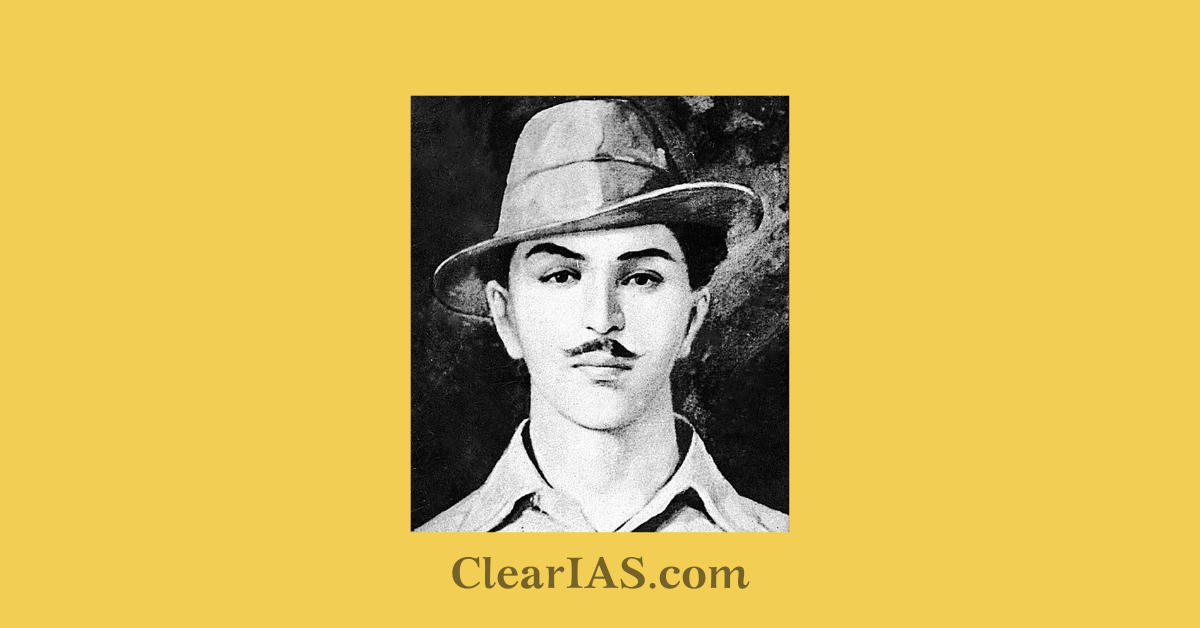
Bhagat Singh was a charismatic revolutionary freedom fighter who was known for his courage. Read here to know more about his short but significant life.
Bhagat Singh was a revolutionary leader who was executed by the British at the age of 23 for his activities in Indian freedom movement.
Table of Contents
Early life of Bhagat Singh
Bhagat Singh was born on September 27, 1907, in Lyallpur, western Punjab, India (now in Pakistan).
Bhagat Singh attended Dayanand Anglo Vedic High School, which was operated by Arya Samaj (a reform sect of modern Hinduism), and then National College, both located in Lahore.
His family members were involved in the freedom struggle and he was drawn to the Indian independence movement from a very young age. His father and his uncle Ajit Singh were active in progressive politics, taking part in the agitation around the Canal Colonization Bill in 1907, and later the Ghadar Movement of 1914–1915.
In 1923, he joined the National College in Lahore, founded two years earlier by Lala Lajpat Rai in response to Mahatma Gandhi’s non-cooperation movement, which urged Indian students to shun schools and colleges subsidized by the British Indian government.

Bhagat Singh’s foray into the freedom movement
His family’s relation with the freedom struggle propelled Bhagat Singh into the activities from a young age. Initially, he supported Mahatma Gandhi and the Non-Cooperation Movement. However, when Gandhi withdrew the movement in the wake of the Chauri Chaura incident, Bhagat Singh turned to revolutionary nationalism.
Bhagat singh was deeply affected by the Jallianwala Bagh massacre (1919) and the violence against unarmed Akali protestors at Nankana Sahib (1921).
In 1924 in Kanpur, he became a member of the Hindustan Republican Association, started by Sachindranath Sanyal a year earlier. The main organizer of the Association was Chandra Shekhar Azad and Bhagat Singh became very close to him.
In 1926, he founded the Naujawan Bharat Sabha, an organization that aimed to encourage revolution against British rule by rallying the peasants and workers.
He made contact with the ‘Workers and Peasants Party’ which brought out the monthly magazine Kirti in Punjabi. For the next year, Bhagat Singh worked on the editorial board of Kirti.
In 1928, he established the Hindustan Socialist Republican Association (HSRA) along with Sukhdev, Chandrashekhar Azad , and others.
HSRA collapsed after Chandrashekar Azad was shot dead in 1930.

Bhagat Singh’s Revolutionary activities
His association with revolutionaries began with HSRA. He was introduced to the philosophy of bombs and the importance of the armed revolution.
In 1927, he was first arrested on charges of association with the Kakori Case accused of an article written under the pseudonym Vidrohi (Rebel).
He was also accused of being responsible for a bomb explosion at Lahore during the Dussehra fair.
The Saunders Case/ Lahore Conspiracy case:
In 1928, Lala Lajpat rai died due to injuries sustained during a protest against the Simon Commission in Lahore. The lathi-charge was ordered by the superintendent of police James Scott.
Bhagat Singh and his revolutionary friends decided to avenge the death of the dear leader. However, in a case of mistaken identity, they assassinated another police official J P Saunders. This was known as the Lahore Conspiracy Case .
- After this incident, Bhagat Singh fled from Lahore and made changed his appearance to avoid arrest.
The murder was condemned as a retrograde action by Mahatma Gandhi, but Jawaharlal Nehru later wrote:
“Bhagat Singh did not become popular because of his act of terrorism but because he seemed to vindicate, for the moment, the honor of Lala Lajpat Rai, and through him of the nation. He became a symbol, the act was forgotten, the symbol remained, and within a few months each town and village of Punjab, and to a lesser extent in the rest of northern India, resounded with his name. Innumerable songs grew about him and the popularity that the man achieved was something amazing.”
Central assembly bombing case:
On 8th April 1929, Bhagat Singh and Batukeshwar Dutt threw a bomb in the Central Assembly at Delhi, from the Visitors’ Gallery. They also threw pamphlets and raised pro-revolutionary slogans.
Both the revolutionaries did not resist arrest since they wanted to spread their message of revolution and anti-imperialism and wanted to use the trial as a platform for it.
- They shouted slogans of “Inquilab Zindabad” during the whole arrest. The slogan became quite popular among the youth and many freedom fighters.
There were no causalities in the incident as it was never their intention to cause physical harm to anyone. Their aim was ‘to make the deaf hear’.
Bhagat Singh was the mastermind behind the incident and was inspired by Auguste Vaillant, a French anarchist, who was executed by France for a similar incident in Paris.
In the trial for the incident, both Singh and Dutt were sentenced to imprisonment for life.
By this time Bhagat Singh was also linked to the JP Saunder’s murder incident. He, along with Rajguru and Sukhdev was charged with the murder of Saunders.
The trial and death of Bhagat Singh
The trial started in July 1929 and was published in daily newspapers.
The young revolutionaries started a hunger strike in Lahore prison demanding better conditions for political prisoners who were also treated as criminals.
They were met by many leaders including Jawaharlal Nehru while they fasted for 116 days which only ended after repeated requests from family and congress leaders.
But the trial was a one-sided affair and Bhagat Singh, Sukhdev, and Rajguru were sentenced to death. The verdict was met with large criticism and many national leaders requested to reduce the sentence but in vain.
The three were ordered to be hanged on 24 March 1931 but the sentence was carried out a day earlier at the Lahore Jail. After the hanging, their mortal remains were cremated in secret.
The executions were reported widely by the press, especially as they took place on the eve of the annual convention of the Congress party in Karachi. Gandhi faced black flag demonstrations by angry youths who shouted: “Down with Gandhi”.
Individual Heroism vs Mass Movement
Bhagat Singh initially believed in individual heroism to achieve the goal.
However, he later realised that individual heroism stood no chance against the brute force of the British empire and the only way to a successful revolution was to unleash a popular broad-based movement.
Legacy of Bhagat Singh
Every year, March 23 is observed as Martyrs’ Day as a tribute to freedom fighters Bhagat Singh, Sukhdev Thapar, and Shivaram Rajguru. The day is also known as Shaheed Diwas or Sarvodaya Day.
During the centenary of his birth, a group of intellectuals sets up an institution named Bhagat Singh Sansthan to commemorate him and his ideals.
He was an atheist and ardent reader- his book “Why I am an Athiest” is quite popular.
Few of his famous quotes were-
- They may kill me but they cannot kill my ideas. They can crush my body, but they will not be able to crush my spirit.
- Bombs and pistols do not make a revolution. The sword of revolution is sharpened on the whetting stone of ideas.
- May the sun in his course visit no land freer, happier, more lovely, than this our own country.
- But mere faith and blind faith is dangerous: it dulls the brain and makes a man reactionary.
- Revolution is an inalienable right of mankind. Freedom is an imperishable birthright of all. Labour is the real sustainer of society.
The youth of India still gain inspiration in his life- a young revolutionary with fire in his blood and calm in his heart.

Aim IAS, IPS, or IFS?

About ClearIAS Team
ClearIAS is one of the most trusted learning platforms in India for UPSC preparation. Around 1 million aspirants learn from the ClearIAS every month.
Our courses and training methods are different from traditional coaching. We give special emphasis on smart work and personal mentorship. Many UPSC toppers thank ClearIAS for our role in their success.
Download the ClearIAS mobile apps now to supplement your self-study efforts with ClearIAS smart-study training.
Reader Interactions
Leave a reply cancel reply.
Your email address will not be published. Required fields are marked *
Don’t lose out without playing the right game!
Follow the ClearIAS Prelims cum Mains (PCM) Integrated Approach.
Join ClearIAS PCM Course Now
UPSC Online Preparation
- Union Public Service Commission (UPSC)
- Indian Administrative Service (IAS)
- Indian Police Service (IPS)
- IAS Exam Eligibility
- UPSC Free Study Materials
- UPSC Exam Guidance
- UPSC Prelims Test Series
- UPSC Syllabus
- UPSC Online
- UPSC Prelims
- UPSC Interview
- UPSC Toppers
- UPSC Previous Year Qns
- UPSC Age Calculator
- UPSC Calendar 2024
- About ClearIAS
- ClearIAS Programs
- ClearIAS Fee Structure
- IAS Coaching
- UPSC Coaching
- UPSC Online Coaching
- ClearIAS Blog
- Important Updates
- Announcements
- Book Review
- ClearIAS App
- Work with us
- Advertise with us
- Privacy Policy
- Terms and Conditions
- Talk to Your Mentor
Featured on

and many more...
Take ClearIAS Mock Exams: Analyse Your Progress

Analyse Your Performance and Track Your All-India Ranking
Ias/ips/ifs online coaching: target cse 2025.

Are you struggling to finish the UPSC CSE syllabus without proper guidance?
- Bihar Board
CFA Institute
Srm university.
- Shiv Khera Special
- Education News
- Web Stories
- Current Affairs
- School & Boards
- College Admission
- Govt Jobs Alert & Prep
- GK & Aptitude
- general knowledge
Bhagat Singh Biography: Birth, Age, Education, Jailterm, Execution, and More About Shaheed-e-Azam
Bhagat singh biography: bhagat singh was a revolutionary freedom fighter who was hanged to death by the britishers at the age of 23 years. his early execution made him a national hero of the indian freedom struggle. on his 91st death anniversary, jagran josh takes a look at his life. .
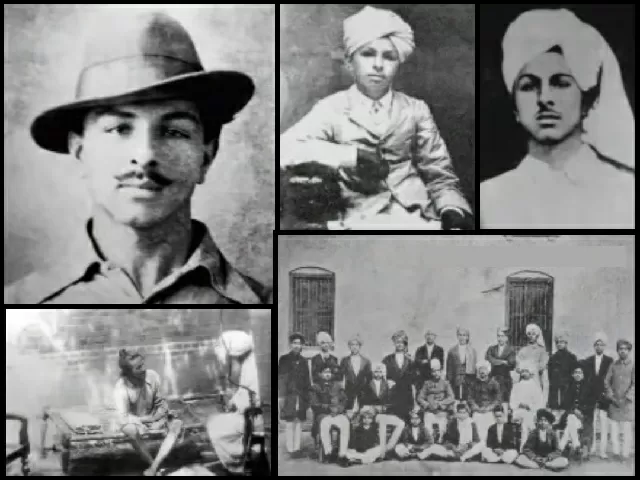
"If someone else would have done this, I would not consider him less than a traitor..." , Bhagat Singh in a letter to his father, who sent an application to the Special Tribunal defending his son in the Lahore case.
Bhagat Singh was a revolutionary freedom fighter who was hanged to death by the Britishers at the age of 23 years . His early execution made him a national hero of the Indian freedom struggle against colonial rule. Fondly called Shaheed Bhagat Singh, many consider him one of the earliest Marxists of India.
Remembering Shaheed Bhagat Singh on his birth anniversary. His sacrifice and unwavering dedication to the cause of India’s freedom continue to inspire generations. A beacon of courage, he will forever be a symbol of India's relentless fight for justice and liberty. pic.twitter.com/cCoCT8qE43 — Narendra Modi (@narendramodi) September 28, 2023
भगत सिंह जी ने जहाँ एक ओर अपनी देशभक्ति से विदेशी हुकूमत को घुटने पर लाने का काम किया, वहीं दूसरी ओर अपने विचारों से स्वतंत्रता के संघर्ष में अलग-अलग बँटे भारत को एक करने का काम किया। देश की आजादी के लिए हँसते-हँसते फाँसी पर झूलने वाले भगत सिंह जी के सर्वोच्च बलिदान से पूरे भारत… pic.twitter.com/WugXE1R151 — Amit Shah (@AmitShah) September 28, 2023
Bhagat Singh Biography
| Birth | 28 September 1907 |
| Age | 23 years |
| Family | |
| Notable Work | Why I Am an Atheist |
| Death | 23 March 1931 (executed by hanging) |
Who was Bhagat Singh?
Born on 28 September 1907 in Lyallpur, western Punjab, India (present-day Pakistan) in a Sikh family, Bhagat Singh was the second son of Kishan Singh Sandhu and Vidya Vati. His grandfather Arjan Singh, father Kishan Singh and uncle Ajit Singh were actively involved in the Indian independence movement.
It is said that when Bhagat Singh was born, his father and two uncles were behind bars for taking part in the agitation around the Canal Colonization Bill in 1907.
After studying in a village school for a couple of years, he attended an Anglo-Vedic school in Lahore , operated by Arya Samaj. In 1923, he was admitted to the National College in Lahore which was founded by the Indian Independence activist Lala Lajpat Rai. The college which was established two years ago was in line with Mahatma Gandhi’s call for non-cooperation to shun schools and colleges subsidised by the British government.
Revolutionary Deeds of Bhagat Singh
The killing of police officer john saunders.
Simon Commission was established by the British Government to report the political situation in India. The Commission headed by Sir John Simon was boycotted as no Indian was a part of it.
On 30 October 1928, the Commission visited Lahore. Lala Lajpat Rai led a silent march against it. In a bid to disperse the demonstrators, the Superintendent of Police, James A. Scott, ordered a lathi charge in which Rai was grievously injured. Rai died of a heart attack on 17 November 1928.
To avenge the death of Lala Lajpat Rai, Bhagat Singh along with two other two revolutionaries, Sukhdev and Rajguru , plotted to kill the Superintendent of Police . However, in case of mistaken identity, Bhagat Singh killed British Police Officer John Saunders when he was leaving the District Police Headquarters in Lahore on 17 December 1928.
Soon after this, a massive search operation was launched and Bhagat Singh had to flee from Lahore, and shave his head and beard to avoid recognition.
While Father of the Nation Mahatma Gandhi condemned the violent act committed by Bhagat Singh former Prime Minister of India Jawaharlal Nehru noted:
The Bombing of Central Assembly Hall
Some famous quotes of bhagat singh.
- “They may kill me, but they cannot kill my ideas. They can crush my body, but they will not be able to crush my spirit."
- "Revolution is an inalienable right of mankind. Freedom is an imperishable birthright of all."
- “But man's duty is to try and endeavour, success depends upon chance and environments.”
- “Philosophy is the outcome of human weakness or limitation of knowledge.”
- “Merciless criticism and independent thinking are the two necessary traits of revolutionary thinking.”
- "I am a man and all that affects mankind concerns me."
- "If the deaf is to hear, the sound has to be very loud."
- “A rebellion is not a revolution. It may ultimately lead to that end.”
- “The aim of life is no more to control the mind, but to develop it harmoniously; not to achieve salvation hereafter, but to make the best use of it here below.”
- "Any man who stands for progress has to criticize, disbelieve and challenge every item of the old faith."
Assembly case trial, jail term, and execution
Post a preliminary hearing in May, the trial in the case began in the first week of June. On June 12, both Singh and Dutt were sentenced to life imprisonment for causing explosions of a nature likely to endanger life, unlawfully and maliciously.
In 1929, his associates Sukhdev, Kishori Lal, and Jai Gopal were arrested in connection with setting up bomb factories in Lahore and Saharanpur. As the investigation in the case furthered, the police connected the dots of Saunders murder, Assembly bombing, and bomb manufacture.
Bhagat Singh who considered himself as a political prisoner, along with others, noted the discrimination between the European and the Indin prisoners. The political prisoners demanded equality in food standards, clothing, toiletries, and other hygienic necessities, as well as access to books and a daily newspaper.
Singh along with other prisoners underwent a hunger strike. Failed attempts were made to break the strike by the government. With the nationwide popularity of the hunger strike, the government decided to advance the Lahore Conspiracy Case Singh was transported to Bostal Jail in Lahore and the trial began on 10 July 1929.
Singh, Rajguru, and Sukhdev were hanged to death in Lahore Conspiracy Case on 23 March 1931 at 7:30 pm.
Get here current GK and GK quiz questions in English and Hindi for India , World, Sports and Competitive exam preparation. Download the Jagran Josh Current Affairs App .
- At what age did Bhagat Singh die? + Bhagat Singh was hanged to death at the age of 23 years.
- Why Bhagat Singh was hanged to death? + Bhagat Singh was hanged to death on 23 March 1991 in Lahore Conspiracy Case.
- Who was Bhagat Singh? + Bhagat Singh was a revolutionary freedom fighter who was executed by hanging by Britishers at the age of 23 years. His execution at an early age made him a national hero of the Indian freedom struggle against British colonial rule. He is fondly known as Shaheed Bhagat Singh.
- India Election Result 2024
- Lok Sabha Election Results 2024
- Election Commission of India
- India T20 World Cup Squad 2024
- ECI Results 2024
- T20 World Cup 2024 Points Table
- UP Election Result 2024
- Bihar Election Result 2024
- AP Election Results 2024
- Rajasthan Election Result 2024
- Personalities of India
- Political Leaders of India
- GK for State PSC
- GK for UPSC
- GK for Banking
Latest Education News
Modi Cabinet 2024 with Portfolios: किसे मिली किस मंत्रालय की कमान और किसका बदला मंत्रालय, कौन बनेगा स्पीकर? सब जानें
PM Modi Cabinet 2024: मोदी का राजतिलक, नई कैबिनेट में किसे मिला कौन-सा मंत्रालय, यहां देखें पूरी लिस्ट
Modi Cabinet Ministers List 2024: मोदी 3.0 में किस सांसद को मिला कौन-सा मंत्रालय, यहां देखें पूरी लिस्ट
Weekly Current Affairs Questions and Answers: 03 June to 10 June 2024
Weekly Current Affairs Quiz Hindi: 03 जून से 10 जून 2024
Picture Puzzle IQ Test: You Have Razor-Sharp Vision If You Can Spot Hidden Bananas In 8 Seconds!
What is Windows Recall? Know How it works and How to Turn it off?
Brain Teaser: Can You Spot the Imposter? Find the Hidden Number 5 Among the S's
Optical Illusion Eye Test: Find the hidden strawberry in 8 seconds!
IBPS RRB Clerk Salary 2024: Check In-Hand Pay, Structure, Perks and Allowances
UP Police Constable Syllabus 2024: यहाँ से डाउनलोड करें यूपी पुलिस कांस्टेबल परीक्षा का लेटेस्ट सिलेबस और एग्जाम पैटर्न
Rajasthan PTET Cut Off 2024: Category-Wise Expected & Previous Year Cut Off Marks
UP B.Ed JEE Expected Cut Off 2024: Category-Wise Qualifying Marks
SBI SCO Recruitment 2024: Apply Online for 150 Special Cadre Officer Vacancies
CTET Previous Year Question Paper With Solution, Download PDF
UP BEd Previous Year Question Paper, Download UP B.Ed JEE PYQ PDFs
भारत में कब कौन बनें प्रधानमंत्री, यहां देखें पूरी लिस्ट
BSF HC and ASI Ministerial Eligibility Criteria 2024: Check Age Limit, Educational Qualification and Physical Requirements
JSSC Teacher 2024 Last-Minute Preparation Tips: Check Exam Day Guidelines & Paper Pattern
Lok Sabha Results Rajasthan 2024: सबसे अधिक और सबसे कम मतों से जीतने वाले प्रत्याशी कौन है?
Win up to 100% Scholarship
- UPSC Online
- UPSC offline and Hybrid
- UPSC Optional Coaching
- UPPCS Online
- BPSC Online
- MPSC Online
- MPPSC Online
- WBPSC Online
- OPSC Online
- UPPCS Offline Coaching
- BPSC Offline Coaching
- UPSC Test Series
- State PSC Test Series
- DAILY CURRENT AFFAIRS
- SUBJECT WISE CURRENT AFFAIRS
- DAILY EDITORIAL ANALYSIS
- DAILY CURRENT AFFAIRS QUIZ
- Daily Prelims(MCQs) Practice
- Daily Mains Answer Writing
- Free Resources

- Offline Centers
- NCERT Notes
- UDAAN Notes
- UPSC Syllabus
- UPSC Prelims PYQs
- UPSC Mains PYQs
- Prelims Preparation

Bhagat Singh: Biography, Scholarly Works, and His Religious and Political Beliefs
On 23 March Martyr’s Day ( Shahid Diwas ) is celebrated in the memory of three freedom fighters Bhagat Singh , Rajguru and Sukhdev.
| , , , and . |
|---|
Bhagat Singh Biography
- Birth: Bhagat Singh was born on September 28, 1907 in the village of Banga in Lyallpur district (present-day Faisalabad, Pakistan).
- Death: He was hanged for murdering British police officer John Saunders in 1931 , at the age of only 23.
- Politically Active: Both Bhagat Singh’s father Kishan and uncle Ajit were politically active against the British.
- His uncle was deported to Mandalay in 1907 for his inflammatory speeches and agitation against the Punjab Colonisation Bill.
- Association with Ghadar Party: After his release, he headed to Europe and then America from where he was associated with the San-Francisco based Ghadar Party.
- Dissenter: Chris Moffat wrote in India’s Revolutionary Inheritance: The politics and promise of Bhagat Singh (2019) – “ a dissenter from a family of dissenters. “
Scholarly Works
- Journals: He wrote for Kirti, the journal of the Kirti Kisan Party and briefly for the Veer Arjun newspaper, published in Delhi.
- Pseudonyms: Singh often used pseudonyms including Balwant, Ranjit and Vidhrohi.
- Poetic Influence : His jail notebooks reveal not only his social and political concerns , but also the kind of literature he was reading while in prison, which included poetry by the likes of Rabindranath Tagore, William Wordsworth, Waiid Ali Shah, Mirza Ghalib and lqbal.
- Religious and Political Beliefs: Despite his present-day co-option by parties across the political spectrum, Bhagat Singh was a steadfast atheist and a Marxist with an anarchist tilt.
Reasons For Practising Atheism by Bhagat Singh
- For him, scientific principles provided a more reliable and logical framework for understanding the world than religious doctrines.
- Socialism and Class Struggle: Bhagat Singh was also an advocate of socialist ideals and saw religion, particularly organized religion, as a potential tool used by the ruling class to control and manipulate the masses.
- Opposition to Dogma and Superstition : He argued that blind faith and unquestioning acceptance of religious doctrines hindered progress and critical thinking and believed in reason and scientific inquiry.
- Secularism and Inclusivity: He opposed the idea of a theocratic state and believed in the separation of religion from the affairs of the state.
Bhagat Singh’s Defence
- Jinnah Defendend: British attempted to pass a Bill which would make it legal to conduct a trial in absentia — without the presence of the accused and Jinnah stood steadfastly against this.
- Jawaharlal Nehru Defended: Nehru was highly critical of the legal process and the injustice being perpetrated by the British.
| The Gandhi-Irwin Pact included which of the following? 1 Invitation to Congress to participate in the Round Table Conference 2. Withdrawal of Ordinances promulgated in connection with the Civil Disobedience Movement 3. Acceptance of Gandhiji’s suggestion for enquiry into police excesses. 4. Release of only those prisoners who were not charged with violence Select the correct answer using the code given below: (a) 1 only (b) 1, 2 and 4 only (c) 3 only (d) 2, 3 and 4 only
|
|---|
To get PDF version, Please click on "Print PDF" button.

- Recent Post
- Related Post
- Most Viewed Post

The Baltimore Ship Accident, The High Stakes For India
Birsa Munda’s 124th Death Anniversary
Why Exam Paper Leaks in India Became One Of Big Issues Of Th...
A neet mess, on the conduct of the medical entrance test.

AUKUS Focus, The Strategic Pivot to France

India Must Tackle Illegal Offshore Gambling Platforms
India and the artemis accords, outreach to diaspora and statesmanship, laying the foundation for a future-ready digital india.

India’s Health Care Journey: Progress and Promise | PW...

Patient Safety Rights Charter: A Global Initiative for Safer...
The united states of india, latest comments, recent editorial.
The Baltimore Ship Accident, The High Stakes For I...
Why Exam Paper Leaks in India Became One Of Big Is...
A NEET Mess, On The Conduct Of The Medical Entranc...
India Must Tackle Illegal Offshore Gambling Platfo...
Popular current affairs
News in Shorts- 10 June 2024
Cabinet Committees
124th Death Anniversary of Birsa Munda
UNSC Non-Permanent Members Election
Green School Quality Standard, Greening Every Lear...
Swearing-In Ceremony
Our Courses

THE MOST LEARNING PLATFORM
Learn From India's Best Faculty

Our Initiatives
Beginner’s roadmap, quick links.

PW-Only IAS came together specifically to carry their individual visions in a mission mode. Infusing affordability with quality and building a team where maximum members represent their experiences of Mains and Interview Stage and hence, their reliability to better understand and solve student issues.
Subscribe our Newsletter
Sign up now for our exclusive newsletter and be the first to know about our latest Initiatives, Quality Content, and much more.
Contact Details
G-Floor,4-B Pusha Road, New Delhi, 110060
- +91 9920613613
- [email protected]
Download Our App
Biginner's roadmap, suscribe now form, fill the required details to get early access of quality content..
Join Us Now
(Promise! We Will Not Spam You.)
CURRENT AF.
<div class="new-fform">
Select centre Online Mode Hybrid Mode PWonlyIAS Delhi (ORN) PWonlyIAS Delhi (MN) PWonlyIAS Lucknow PWonlyIAS Patna Other
Select course UPSC Online PSC ONline UPSC + PSC ONLINE UPSC Offline PSC Offline UPSC+PSC Offline UPSC Hybrid PSC Hybrid UPSC+PSC Hybrid Other
</div>


Bhagat Singh Jayanti, Biography, History, Revolutionary Activities
Bhagat Singh born in September 28, 1907 was an Indian revolutionary freedom fighter. Know all about Bhagat Singh Jayanti, Biography, Death and Important Facts for UPSC & Other government exams.
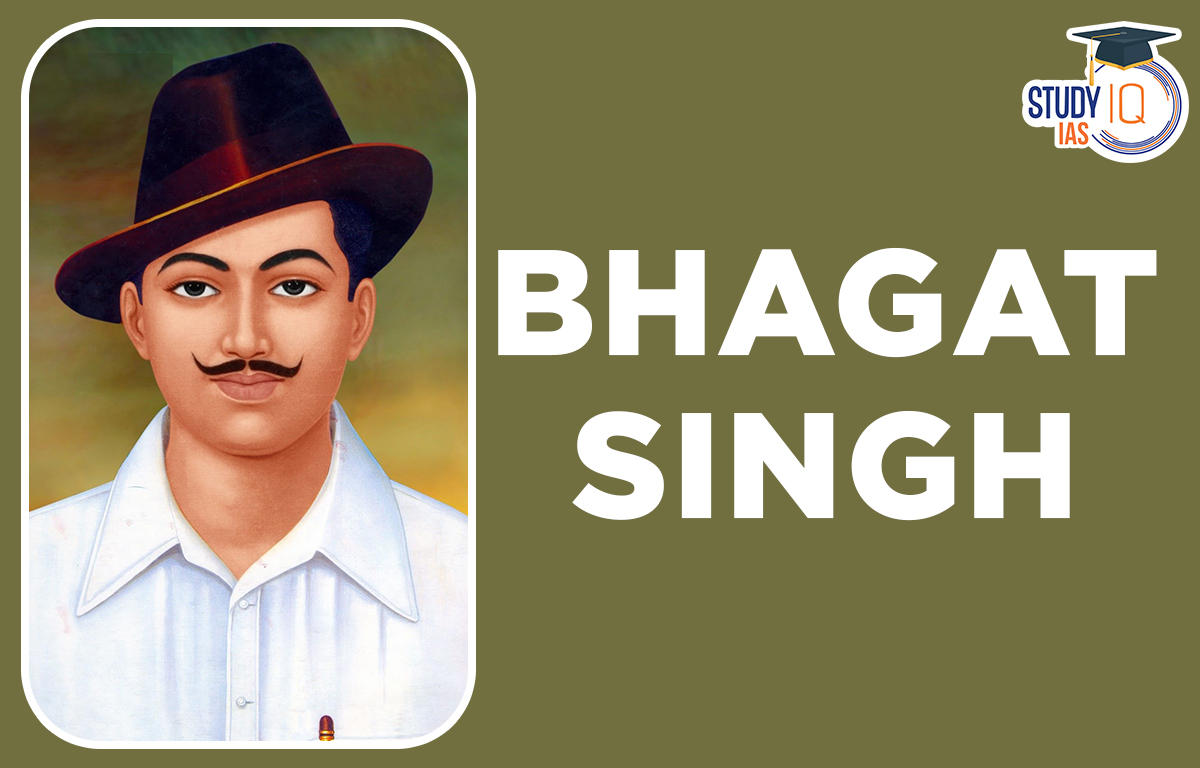
Table of Contents
Bhagat Singh (1907-1931) was a charismatic Indian revolutionary who is considered one of the most famous and iconic figures in the Indian independence movement. He was a staunch advocate of socialist and communist ideals, and he believed in using violence to achieve independence from British rule. He is considered one of the most influential nationalist leaders of the Indian Independence movement .
He is also referred to as ‘Shaheed Bhagat Singh’ . The word ‘Shaheed’ means a martyr. “If the deaf are to hear, the sound has to be very loud. When we dropped the bomb, it was not our intention to kill anybody, we have bombed the British Government, British must quit India and make it free.” He said this after the Assembly Bombing.
Bhagat Singh Jayanti
Bhagat Singh Jayanti, also known as Shaheed Bhagat Singh’s birth anniversary, is observed on September 28th every year. It commemorates the birth anniversary of Bhagat Singh, a prominent freedom fighter of India and revolutionary in India’s struggle for independence from British colonial rule. On this day, people across India pay tribute to his courage, patriotism, and sacrifice for the nation. Various events, seminars, and cultural programs are organized to remember his legacy and the ideals he stood for. Bhagat Singh’s contributions to the independence movement continue to inspire generations of Indians.
Bhagat Singh Biography
All those who stand up for justice and struggle against injustice might find inspiration in his life. At a very young age, he devoted his entire life was devoted to the fight for India’s Independence. His History is a reminder that success is still attainable even in the face of extreme adversity. The biography of Bhagat Singh offers inspiration to people battling for change today and offers a glimpse into the revolutionary’s mentality.
| Birth Place and Date | 28 September 1907 Banga, Lyallpur District, Punjab Province, British India |
| Parents | |
| Education | . |
| Associated with Organisation | |
| Notable Work | An essay named “ ” was written in 1930 at Lahore Central Jail. |
| His Inspiration | . |
| Last line | In his last letter, Singh wrote, ” |
| Ideals | In his last testament, “To Young Political Workers”, he declares his ideal as the “Social reconstruction on new, i.e., Marxist, basis”. |
| Death | 23 March 1931 (aged 23) Lahore Central Jail, Lahore, Punjab Province, British India |
| . | |

Bhagat Singh History
One of the most important revolutionaries in the Indian Nationalist Movement is Bhagat Singh. On September 28, 1907, Kishan Singh and Vidyavati gave birth to Bhagat Singh in Banga, Lyallpur District (now Pakistan). When he was born, his uncles Ajit and Swaran Singh, as well as his father Kishan Singh, were all imprisoned for protesting the 1906 Colonization Bill. Being raised in a politically conscious household where his family supported the Ghadar Party, young Singh developed a sense of patriotism. Singh started supporting Mahatma Gandhi’s Non-Cooperation Movement at a very young age. He openly resisted the British and carried out Gandhi’s request by setting fire to publications that the government-sponsored. In fact, he quit school altogether to enroll in Lahore’s National College. The 1919 Jallianwala Bagh Massacre and the 1921 murder of unarmed Akali demonstrators at the Nankana Sahib both occurred when he was a teenager, and both events strongly influenced his patriotic viewpoint. His family adhered to the Gandhian philosophy of using non-violence to achieve Swaraj. For a while, he also backed the Indian National Congress and the objectives of the Non-Cooperation Movement . After the Chauri Chaura Incident , Gandhi demanded that the movement against non-cooperation be abandoned. He disassociated himself from Gandhi’s nonviolent effort because of the choice and joined the Young Revolutionary Movement instead. Thus began his career as the most well-known proponent of a bloody uprising against the British Raj. The Naujawan Bharat Sabha was established in March 1925, with he serving as its secretary, and was motivated by nationalist movements in Europe. In addition, He joined the radical Hindustan Republican Association (HRA), which he eventually renamed the Hindustan Socialist Republican Association (HSRA) with fellow revolutionaries Chandra Shekhar Azad and Sukhdev.
Freedom fighters Revolutionary Activities
His political activism began in earnest during the 1920s. He was involved in a number of protests and demonstrations against British rule, and he also participated in several armed robberies to fund the HSRA’s activities. His early actions consisted primarily of penning critical articles against the British government and printing and distributing leaflets explaining the fundamentals of a violent insurrection with the goal of overthrowing the government. To protest the Simon Commission’s arrival, Lala Lajpat Rai led an all-parties parade that marched toward the Lahore train station on October 30, 1928. To stop the protesters from moving forward, the police used a violent lathi charge. The revolutionaries were not able to recognize J.P. Saunders, who was Assistant Superintendent of Police; they thought that he was a Scott and killed him instead. He quickly left Lahore to avoid getting caught. To avoid being recognized, he shaved his beard and cut his hair, violating the core values of Sikhism.
Hindustan Socialist Republican Association (HSRA)
- He was a prominent revolutionary in India’s fight for independence, closely aligned with the Hindustan Socialist Republican Association (HSRA).
- Joining the HSRA in his youth, Singh was drawn to its militant approach against British colonial rule.
- Notable members included Sukhdev Thapar and Shivaram Rajguru.
- Singh and his associates became infamous for actions such as the Saunders killing, seeking revenge for the death of Lala Lajpat Rai, and the Central Legislative Assembly bombing to protest repressive laws.
- Their hunger strike in prison gained widespread support.
- Executed by the British in 1931, Singh’s martyrdom remains an enduring symbol of courage and sacrifice in India’s struggle for freedom.
Assassination of J.P. Saunders
- He and his compatriot Rajguru assassinated J.P. Saunders in 1928 to avenge the death of Lala Lajpat Rai during a protest against the Simon Commission.
- Mistakenly identifying Saunders as the responsible police officer, they shot him dead in Lahore.
- This act marked a significant turning point in India’s struggle for independence and propelled Singh and his associates into the national spotlight, as they openly dared to challenge British colonial rule.
Central Assembly Bombing Case
- Singh and Batukeshwar Dutt exploded a bomb in Delhi’s Central Assembly on April 8, 1929, from the Visitors’ Gallery.
- They also raised pro-revolutionary banners and threw leaflets.
- Because they planned to utilize the trial as a platform to propagate their message of revolution and anti-imperialism, neither revolutionary resisted being taken into custody.
- Throughout the entire arrest, they screamed “Inquilab Zindabad” slogans.
- The phrase gained a lot of traction with young people and many liberation warriors.
- They never intended to hurt anyone physically, thus there were no casualties in the incident.
- Their claimed objective was “to make the deaf hear.” Auguste Valliant, a French anarchist who was hanged by France for a similar incident in Paris, served as inspiration for Bhagat Singh, the incident’s mastermind.
- Both Singh and Dutt received life sentences in jail after being found guilty in the incident’s trial.
- At this point, He had also been connected to the JP Saunders murder case.
- He was charged with the murder of Saunders together with Rajguru and Sukhdev.
Dr.Sarvepalli Radhakrishnan Biography
1929 Assembly Incident Trial
- The violent protest was met with harsh criticism from the political body.
- In response, Singh said, “Force, when used violently, is ‘violence’ and is, thus, morally indefensible, but when it is used in support of a righteous cause, it has its moral legitimacy.
- Trial proceedings began in May, with Singh attempting to represent himself and Batukeshwar Dutt being represented by Afsar Ali.
- The explosions’ malevolent and illegal motive was cited by the court in its decision in favour of a life sentence.
Lahore Conspiracy Case and Trial
- Three people, Hans Raj Vohra, Jai Gopal, and Phanindra Nath Ghosh, turned government approvers, which resulted in a total of 21 arrests, including those of Sukhdev, Jatindra Nath Das, and Rajguru.
- The police raided the HSRA bomb factories in Lahore shortly after the sentencing and detained several well-known revolutionaries.
- For the murder of Assistant Superintendent Saunders, the making of bombs, and the Lahore Conspiracy case, Bhagat Singh was detained once again.
- On the orders of the Viceroy, Lord Irwin, a special tribunal made up of Justices J. Coldstream, Agha Hyder, and G. C. Hilton was established on May 1st, 1930 due to the sluggishness of the legal proceedings.
- The tribunal had the authority to conduct the trial without the presence of the defendant, and it was a biased trial that rarely followed the standard legal rights principles.
Hunger Strike
- When Singh was sent to the Central Jail Mianwali from the Delhi jail he witnessed discrimination between the Indian and European Prisoners.
- He considered himself as a political prisoner.
- He organized a hunger strike on behalf of fellow political prisoners from India who he believed were being treated like normal criminals.
- They wanted access to literature and a daily newspaper, as well as equality in access to food standards, clothing, toiletries, and other hygiene essentials.
- They contended that they shouldn’t be made to perform manual labour or any other inhumane tasks while incarcerated.
- Around June 1929, the public began to support Bhagat Singh and his colleagues more due to the hunger strike.
- After a 63-day hunger strike, Jatindra Nath Das passed away on September 13, 1929.
- Nearly all of the nation’s nationalist leaders paid respects to Jatin Das.
- In response, Gopi Chand Bhargava and Mohammad Alam withdrew from the Punjab Legislative Council.
- Nehru also successfully sponsored an adjournment motion in the Central Assembly to denounce the “inhumane treatment” of the Lahore captives.
- He finally ended the hunger strike after 116 days on October 5, 1929.
- During this time, Singh was well-liked outside of Punjab among ordinary Indians.

Thoughts and Opinions
His sense of patriotism had been embedded in him since a very young age. He was raised to value nationalism and yearned for an independent India free from British rule. He developed a socialist outlook after reading a lot of European literature and creating a great desire for a democratic future for his beloved nation. Singh was born a Sikh, but after seeing numerous Hindu-Muslim riots and other religious upheavals, he began to lean toward atheism. He thought that in order to attain something as precious as Independence, imperialism’s exploitative aspect needed to be eradicated. According to his opinion, only an armed revolution along the lines of the Bolshevik Revolution in Russia could bring about such transformation. He coined the phrase “Inquilab Zindabad,” which eventually became the war cry of the campaign for Indian independence.
Bhagat Singh Death
He died on March 23, 1931, at 7:30 in the morning, hanging with his friends Rajguru and Sukhdev at the Lahore Jail. He was 23 at that time. He was born on September 28, 1907. They allegedly shouted their favorite slogans, such as “Inquilab Zindabad” and “Down with British Imperialism,” as they marched joyfully to the execution location bank of the Sutlej River.

Shaheed Bhagat Singh Legacy
He was the perfect role model for the youth of his period because of his passionate patriotism and developed idealism. Also became the voice of his generation through his criticism of the British Imperial Government in writing and speech. Numerous people have questioned his dramatic departure from Gandhi’s non-violent path to Swaraj, yet with his daring embrace of martyrdom, he encouraged hundreds of teenagers and young adults to fully engage in the freedom movement.
His legacy is complex and contested. He is revered by many Indians as a national hero and a symbol of the struggle for independence. However, he is also criticized for his use of violence and his association with the HSRA, which was responsible for several other acts of violence against British officials and civilians.
Despite the controversies surrounding his legacy, there is no doubt that he was a charismatic and influential figure who played a significant role in the Indian independence movement. His life and work continue to inspire generations of Indians who are fighting for social justice and equality.
Sharing is caring!
Bhagat Singh Jayanti FAQs
Why bhagat singh is famous.
Bhagat Singh was an Indian revolutionary freedom fighter who was hanged to death by British colonisers at the age of 23 years. Fondly known as 'Shaheed (martyr) Bhagat Singh', he is considered a national hero of India's freedom struggle against colonial rule.
What is Bhagat Singh real name?
His real name was Bhagat Singh but he was also known as Shaheed-e-Azam.
Why did Gandhi not save Bhagat?
Gandhi, who advocated for nonviolence, disagreed with Bhagat Singh and his allies' use of violence to obtain freedom. That didn't imply Gandhi supported hanging Bhagat Singh and his pals insinually.
Who was better Gandhi or Bhagat Singh?
Bhagat Singh engaged in a revolutionary armed fight laced with violence against the British government, while Mahatma Gandhi led a civil disobedience movement based on the values of nonviolence and satyagraha. Despite having different philosophies and worldviews, each has the same goal.
What's the slogan of Bhagat Singh?
One of Bhagat Singh's most famous slogans is "Inquilab Zindabad."
What is the bhagat singh death age?
Bhagat Singh died at the age of 23. He was born on September 28, 1907, and was executed on March 23, 1931.
Give me a Brief information about Bhagat Singh.
Bhagat Singh (28 September 1907 – 23 March 1931) was an Indian revolutionary who challenged British rule of India. He is considered to be one of the most important figures in the Indian independence movement. In 1928, Bhagat Singh and other HRA members assassinated John Saunders, a British police officer. They were convicted of murder and sentenced to death. Singh was hanged on 23 March 1931 at the age of 23.
What is bhagat singh date of birth and death?
Bhagat Singh was born on September 28, 1907, and died on March 23, 1931.
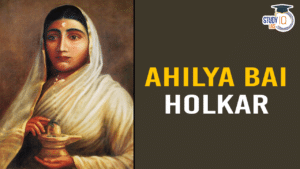
Leave a comment
Your email address will not be published. Required fields are marked *
Save my name, email, and website in this browser for the next time I comment.

- UPSC Online Coaching
- UPSC Exam 2024
- UPSC Syllabus 2024
- UPSC Prelims Syllabus 2024
- UPSC Mains Syllabus 2024
- UPSC Exam Pattern 2024
- UPSC Age Limit 2024
- UPSC Calendar 2024
- UPSC Syllabus in Hindi
- UPSC Full Form

Recent Posts
- UPPSC Exam 2024
- UPPSC Calendar
- UPPSC Syllabus 2024
- UPPSC Exam Pattern 2024
- UPPSC Application Form 2024
- UPPSC Eligibility Criteria 2024
- UPPSC Admit card 2024
- UPPSC Salary And Posts
- UPPSC Cut Off
- UPPSC Previous Year Paper
BPSC Exam 2024
- BPSC 70th Notification
- BPSC 69th Exam Analysis
- BPSC Admit Card
- BPSC Syllabus
- BPSC Exam Pattern
- BPSC Cut Off
- BPSC Question Papers
IB ACIO Exam
- IB ACIO Salary
- IB ACIO Syllabus
CSIR SO ASO Exam
- CSIR SO ASO Exam 2024
- CSIR SO ASO Result 2024
- CSIR SO ASO Exam Date
- CSIR SO ASO Question Paper
- CSIR SO ASO Answer key 2024
- CSIR SO ASO Exam Date 2024
- CSIR SO ASO Syllabus 2024
Study Material Categories
- Daily The Hindu Analysis
- Daily Practice Quiz for Prelims
- Daily Answer Writing
- Daily Current Affairs
- Indian Polity
- Environment and Ecology
- Art and Culture
- General Knowledge
- Biographies
IMPORTANT EXAMS

- Terms & Conditions
- Return & Refund Policy
- Privacy Policy

Bhagat Singh Biography: Life, Death, Slogans and Legacy

Table of Contents
Bhagat Singh is seen as one of the important leaders in India’s fight for independence from British rule. People often call him “Shaheed” Bhagat Singh , which means a person who died for a cause. After the Assembly Bombing, Bhagat Singh explained, “If we want the deaf to hear us, we need to make a big noise. When we threw the bomb, we didn’t want to hurt anyone. Instead, we wanted to send a strong message to the British government that they should leave India and let it be free.”
Fill Out the Form for Expert Academic Guidance!
Please indicate your interest Live Classes Books Test Series Self Learning
Verify OTP Code (required)
I agree to the terms and conditions and privacy policy .
Fill complete details
Target Exam ---
Bhagat Singh Overview
| 27th Sept 1907 Banga, Lyallpur District, Punjab Province, British India | |
| An essay named “Why I Am an Atheist” which he wrote in 1930 at Lahore Central Jail. | |
| In his last letter, Bhagat Singh wrote, ” I have been arrested while waging a war. For me there can be no gallows “. | |
| In his last testament, “To Young Political Workers”, he declares his ideal as the “Social reconstruction on new, i.e., Marxist, basis”. | |
| 23 March 1931 (aged 23) Lahore Central Jail, Lahore, Punjab Province, British India | |
Bhagat Singh Biography
Bhagat Singh was born in 1907 in a small village in India. He grew up during a time when India was under British rule, and he witnessed the struggles and injustices faced by his fellow countrymen.
As he became older, Bhagat Singh became deeply committed to the idea of India’s independence. He joined the freedom struggle and actively participated in protests and movements against British rule. One of the most significant events in his life was the Jallianwala Bagh Massacre, which deeply moved him and strengthened his resolve to fight for his country’s freedom.
Bhagat Singh is best known for his fearless acts of defiance against the British government. He was involved in daring actions to draw attention to the Indian people’s demands for freedom. His courage and sacrifice made him a national hero, and he is often referred to as “Shaheed Bhagat Singh,” meaning Martyr Bhagat Singh.
Despite his young age, Bhagat Singh’s contributions to India’s struggle for independence are remembered and celebrated to this day. His biography serves as an inspiration to all, reminding us of the power of determination and the pursuit of justice in the face of adversity.
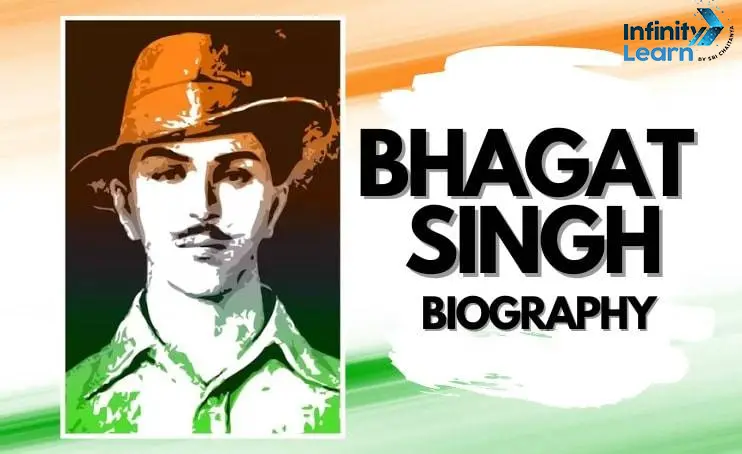
Bhagat Singh Revolutionary Activities
Bhagat Singh was a brave and passionate freedom fighter who took part in several revolutionary activities during India’s struggle for independence from British rule. Here’s an explanation of some of his key actions in simple words:
- Hindustan Socialist Republican Association (HSRA) : Bhagat Singh joined this group of like-minded young revolutionaries who believed in using force to overthrow British rule and bring freedom to India.
- Assembly Bombing : Bhagat Singh, along with his associates, threw non-lethal smoke bombs in the Central Legislative Assembly in Delhi in 1929. They did this to protest against repressive laws and show their defiance to the British.
- Lahore Conspiracy Case : Bhagat Singh and his comrades were arrested after the assembly bombing. They were put on trial in what became known as the Lahore Conspiracy Case, where they boldly declared their revolutionary aims and were willing to face the consequences.
- Hunger Strike : While in jail, Bhagat Singh and his fellow prisoners went on a hunger strike to demand better treatment and rights for political prisoners. Their courage and determination drew widespread support.
- Slogans and Writings : Bhagat Singh used his writings and slogans to inspire others and raise awareness about India’s fight for freedom. His slogan “Inquilab Zindabad” (Long Live the Revolution) became iconic.
- Martyrdom : Bhagat Singh, along with Rajguru and Sukhdev, was sentenced to death for his involvement in the killing of a British police officer. Despite the option of saving his life by renouncing violence, he chose to embrace martyrdom, becoming a symbol of sacrifice for the nation’s freedom.
Bhagat Singh’s revolutionary activities demonstrated his unwavering commitment to India’s independence and inspired countless others to join the struggle. His bravery and sacrifice continue to be celebrated, reminding us of the power of determination in the pursuit of justice and freedom. Subash Chandra Bose Biography
Bhagat Singh’s Ideals and Beliefs
Bhagat Singh had strong ideals and beliefs that guided his actions during India’s struggle for independence. Here’s an explanation of his key ideals and beliefs in simple words:
- Patriotism : Bhagat Singh had deep love for his country, India. He believed in the idea of a free and independent India where every citizen could live with dignity and pride. He was willing to sacrifice everything for his homeland.
- Secularism : Bhagat Singh believed in a united and secular India, where people of all religions and backgrounds could coexist peacefully. He rejected any form of discrimination or religious division.
- Socialism : Bhagat Singh was influenced by socialist ideas. He believed in a society where wealth and resources were shared more equally among the people, reducing poverty and inequality.
- Non-Violence vs. Revolution : While he admired Mahatma Gandhi’s philosophy of non-violence, Bhagat Singh felt that, in certain situations, a more forceful approach was needed to gain independence. He believed in using revolutionary means to overthrow British rule.
- Youth Empowerment : Bhagat Singh had great faith in the power of young people to bring about change. He encouraged the youth of India to actively participate in the freedom struggle and take charge of their nation’s destiny.
- Sacrifice : Bhagat Singh believed that freedom came with a price. He was willing to sacrifice his life for the greater good of India. He famously said, “It is easy to kill individuals but you cannot kill the ideas.”
- Fearlessness : He displayed remarkable courage and fearlessness in the face of adversity. He was unafraid of the consequences of his actions and remained steadfast in his commitment to the cause.
Bhagat Singh’s ideals and beliefs continue to inspire people today, reminding us of the importance of patriotism, equality, and the willingness to stand up for what is right in the pursuit of a just and free society.
Bhagat Singh Quotes & Slogans
Bhagat Singh’s quotes and slogans are powerful words that continue to inspire and remind us of his unwavering dedication to India’s freedom struggle.
- “Inquilab Zindabad!” – This iconic slogan, which translates to “Long Live the Revolution,” was often used by Bhagat Singh to inspire the masses in their fight for independence.
- “They may kill me, but they cannot kill my ideas. They can crush my body, but they will not be able to crush my spirit.” – Bhagat Singh emphasized the enduring power of his ideas and convictions.
- “It is easy to kill individuals but you cannot kill the ideas.” – He believed that while individuals could be silenced, the ideas of freedom and justice would persist.
- “Revolution is an inalienable right of mankind. Freedom is an imperishable birthright of all.” – Bhagat Singh articulated the belief that every person has the inherent right to strive for freedom and justice.
- “I am a man, and all that affects mankind concerns me.” – He expressed his deep concern for the welfare of all humanity, emphasizing the universal nature of his cause.
- “Merciless criticism and independent thinking are the two necessary traits of revolutionary thinking.” – Bhagat Singh stressed the importance of critical thinking and independent analysis in pursuing revolutionary goals.
- “The sword of revolution is sharpened on the whetting-stone of ideas.” – He highlighted the role of ideas and ideology as the driving force behind revolutionary actions.

Bhagat Singh Photo
Bhagat Singh’s photo , drawing, and image, including his real photo, hold a special place in the hearts of many. His photo captures the fearless spirit of a young revolutionary who fought passionately for India’s freedom. A Bhagat Singh drawing or image often portrays him with a stern yet determined expression, symbolizing his unwavering commitment to the cause. Bhagat Singh real photo , a historic relic, reminds us of the sacrifices made by him and others during the struggle for independence. These visuals serve as powerful reminders of Bhagat Singh’s legacy and the indomitable spirit of those who dedicated their lives to securing India’s freedom.
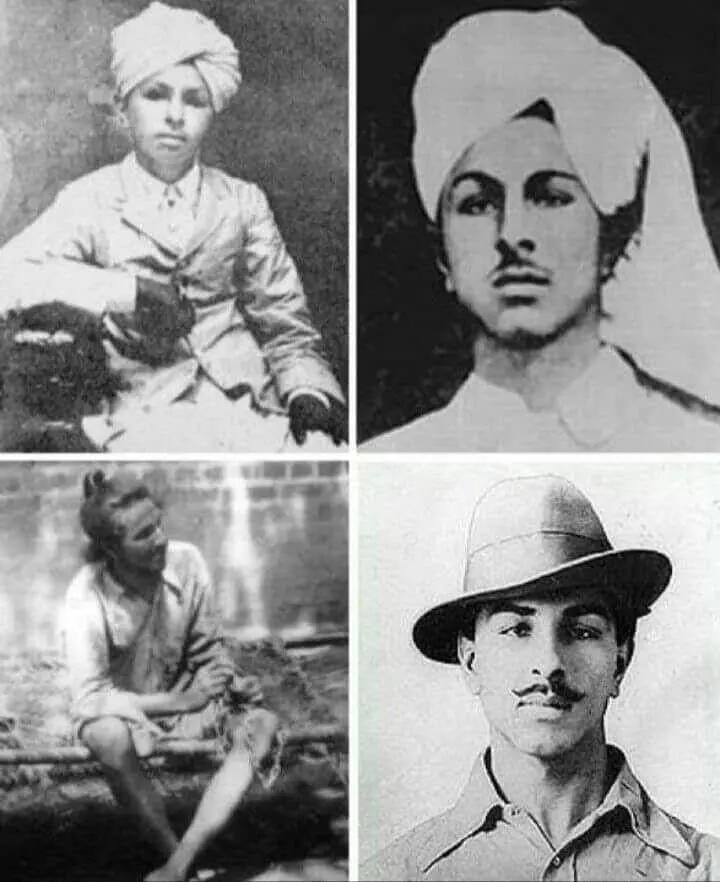
Bhagat Singh Death
Bhagat Singh Death is a significant part of his life story. Bhagat Singh Death Date is March 23, 1931, in Lahore, which is now in Pakistan. His death occurred as a result of his execution by hanging. Bhagat Singh willingly embraced martyrdom for the cause of India’s freedom from British rule. His sacrifice continues to inspire people, and the date of his death, March 23rd, is observed as Shaheed Diwas ( Martyrs’ Day ) in India to honor his memory and the sacrifices of other freedom fighters.
Bhagat Singh Legacy
Bhagat Singh’s legacy is a profound and enduring one, deeply rooted in his fearless commitment to the cause of India’s independence and his unwavering dedication to justice and equality. This legacy continues to inspire not only Indians but people worldwide.
At the heart of Bhagat Singh’s legacy is his unparalleled bravery and willingness to sacrifice his life for the greater good. He refused to bow down to British oppression and colonial rule, even when faced with the gravest of consequences. His sacrifice is a reminder of the extraordinary lengths to which individuals can go when they passionately believe in a cause.
Bhagat Singh’s legacy is also deeply intertwined with his ideological beliefs. He was a fervent advocate of socialism, secularism, and equality. His vision for an independent India was one where every citizen, regardless of their religion or background, would enjoy equal rights and opportunities. This vision continues to resonate with the principles of democracy and justice.
Bhagat Singh famous slogan, “Inquilab Zindabad” (Long Live the Revolution) , remains a rallying cry for those who strive for social change and justice. It embodies the spirit of resistance against oppression and tyranny. Bhagat Singh’s writings and speeches, which articulated his vision for a just society, continue to inspire scholars, activists, and thinkers.
The impact of Bhagat Singh’s legacy extends to various aspects of Indian culture and society. His birth anniversary, observed on September 28th, is celebrated across the nation as a day of remembrance and reflection. Monuments, memorials, and museums dedicated to his memory stand as a testament to his enduring influence. Films, literature, and documentaries continue to be made about his life, ensuring that his story is passed down to new generations.
Moreover, Bhagat Singh’s legacy has inspired countless individuals to stand up against injustice, tyranny, and inequality not only in India but around the world. His sacrifice and unwavering dedication serve as a beacon of hope for those who believe in the power of ordinary individuals to bring about extraordinary change.
In conclusion, Bhagat Singh’s legacy is a testament to the indomitable spirit of a young revolutionary who dared to challenge the mightiest empire of his time. His principles of justice, equality, and freedom remain relevant, and his memory continues to ignite the flames of inspiration in the hearts of those who aspire to create a better and more just world. Bhagat Singh’s legacy is not just a part of history; it is a living force that continues to shape the aspirations and dreams of a nation and its people.

Bhagat Singh Biography Summary
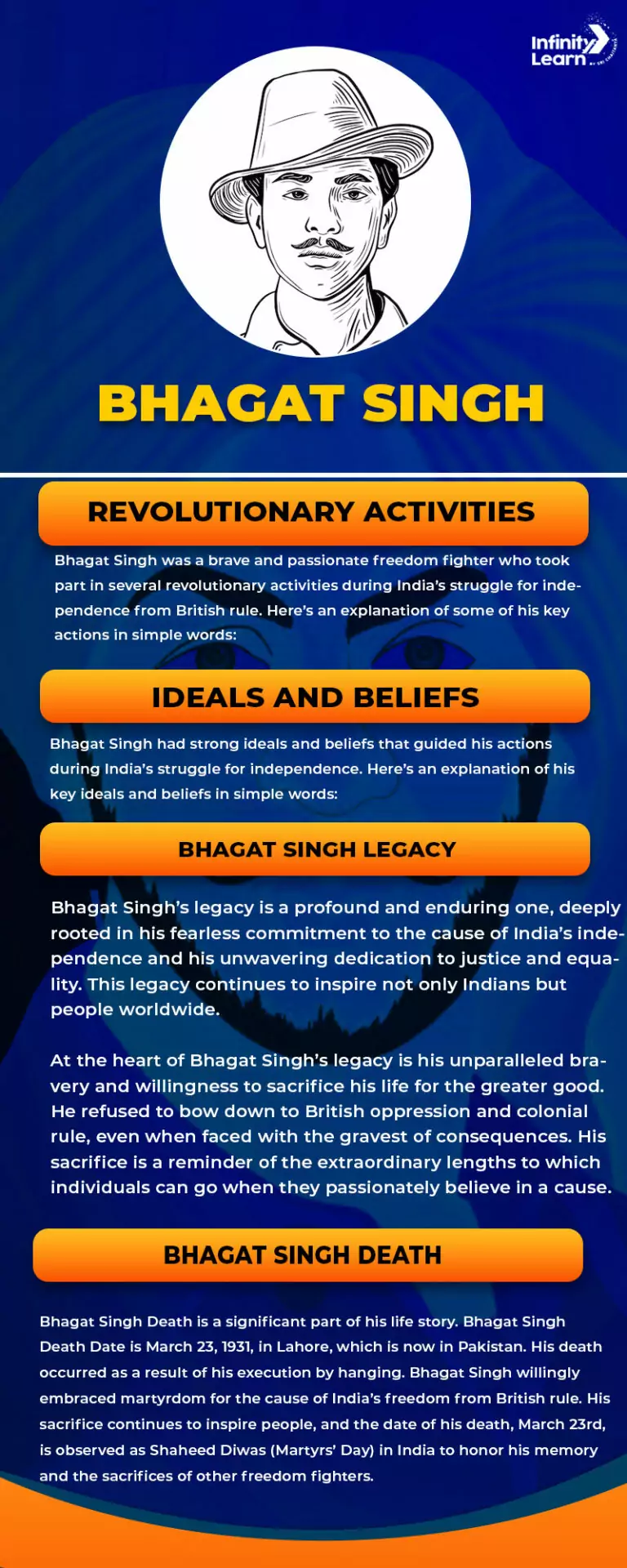
FAQs on Bhagat Singh Biography
Who is bhagat singh.
Bhagat Singh was a prominent Indian freedom fighter who played a significant role in the struggle for India's independence from British colonial rule. He is celebrated for his courage, patriotism, and sacrifice.
How to draw Bhagat Singh?
o draw Bhagat Singh, you can find reference images online or in books. Start by sketching his facial features, such as his distinctive mustache. Include details like his attire and the background that represents the era he lived in.
When was Bhagat Singh born?
Bhagat Singh was born on September 28, 1907, in the village of Banga, Punjab, which is now in Pakistan.
When was Bhagat Singh hanged?
Bhagat Singh was hanged on March 23, 1931, in Lahore Central Jail in British-ruled India, along with his fellow revolutionaries Rajguru and Sukhdev.
How did Bhagat Singh die?
Bhagat Singh died by execution through hanging. He willingly embraced martyrdom for the cause of India's freedom from British colonial rule.
Why is Bhagat Singh famous?
Bhagat Singh is famous for his unwavering commitment to India's independence struggle, his acts of defiance against British oppression, and his sacrifice. He is an iconic figure in India's history and an inspiration for generations.
What is Bhagat Singh's real name?
Bhagat Singh's real name was Shaheed Bhagat Singh. Shaheed means martyr, and this title was added to his name in recognition of his sacrifice for the nation.
What's the slogan of Bhagat Singh?
Bhagat Singh is often associated with the slogan Inquilab Zindabad, which translates to Long Live the Revolution. This slogan represents his revolutionary spirit and commitment to change.
How old was Bhagat Singh when he died?
Bhagat Singh was 23 years old when he was executed on March 23, 1931.
Did Bhagat Singh have a wife?
No, Bhagat Singh did not have a wife. His life was dedicated to the freedom struggle, and he remained unmarried, fully committed to the cause of India's independence.
Related content
Talk to our academic expert!
Language --- English Hindi Marathi Tamil Telugu Malayalam
Get access to free Mock Test and Master Class
Register to Get Free Mock Test and Study Material
Offer Ends in 5:00

Biography Of Bhagat Singh: The Inspiring Story of Indian independence movement
Table of Contents
Introduction
Bhagat Singh was a prominent socialist and revolutionary socialist considered to be one of the most influential revolutionaries of the Indian independence movement. Born on September 28, 1907, in Banga, Punjab, He was just a teenager when he became politically active and involved in the fight against British rule in India. He was deeply influenced by Marxist and anarchist ideologies, and he became a charismatic figure for the young people of India who were looking for ways to challenge the colonial power.
He was arrested for his role in the bombing of the Central Legislative Assembly in Delhi in 1929 and was hanged for the crime on March 23, 1931, at the age of 23. His death was widely mourned in India and he became a symbol of the Indian independence movement, inspiring generations of young people to fight for freedom and social justice.
Throughout his life, Bhagat Singh was known for his unwavering commitment to his beliefs, his fearlessness in the face of adversity, and his deep understanding of the need for political and social change. Today, he is remembered as one of India’s greatest national heroes and continues to inspire people around the world with his message of justice and equality.
Early Life And Education
Bhagat Singh was born on September 28, 1907, in Banga, Punjab, India, into a Punjabi Sikh family that was politically active and had a history of involvement in the independence movement. His father and uncle were both prominent independence activists, and he was exposed to revolutionary ideas from a young age.
He received primary education in his village and later in Lahore, where he studied at the National College. He was a bright student and showed a keen interest in history and politics, especially the ideas of socialism and anarchism. He was influenced by the works of European revolutionaries such as Vladimir Lenin, Leon Trotsky, and Mikhail Bakunin.
His political awakening took place during the Non-Cooperation Movement of 1920-22 and the subsequent crackdown by the British authorities. He became involved in revolutionary organizations and was arrested several times for his political activities. Despite this, he continued to work towards independence and was eventually hanged by the British in 1931 at the age of 23.
He remains an inspiration for millions of people in India and around the world who are committed to the ideals of freedom and equality. He is remembered for his unwavering commitment to the cause of independence and social justice, and for his bravery in the face of adversity.
Family Life Of “Bhagat Singh”
Bhagat Singh was born into a Punjabi Sikh family that was politically active and had a history of involvement in the Indian independence movement. His father, Kishan Singh, and uncle, Ajit Singh, were both prominent independence activists and were members of the Ghadar Party, a group dedicated to ending British rule in India.
There is not much information available about His’s personal life or family beyond his role as a revolutionary socialist. He never married and had no children. However, his political activities and his role in the Indian independence movement have made him a beloved figure in Indian history, and he remains an inspiration for millions of people in India and around the world who are committed to the ideals of freedom and equality.
Related post:- Biography Of Dr. BR Ambedkar-Babasaheb Ambedkar Life Story
Bhagat Singh was a socialist and revolutionary socialist who was actively involved in the Indian independence movement. His political career began in his teenage years, when he became involved in various independence organizations and began participating in anti-colonial activities.
In 1928, Bhagat Singh and a group of fellow revolutionaries carried out a bombing in the Central Legislative Assembly in Delhi, in protest against the British passing of the Public Safety Bill and Trade Disputes Act, which they believed were unjust. The bombing resulted in the injury of several British officials but no fatalities. Bhagat Singh and his companions were arrested and charged with murder and treason.
Bhagat Singh was held in jail for more than two years and used his time there to write several articles and pamphlets advocating for independence and social justice. His writings became widely popular and helped to galvanize public opinion in favor of the independence movement.
Despite facing numerous obstacles and arrests, Bhagat Singh remained committed to his political beliefs until his death. He was hanged by the British on March 23, 1931, at the age of 23, in a widely publicized execution that helped to further galvanize public opinion against British rule.
His career as a revolutionary socialist was short but influential. He remains one of the most famous and revered figures in Indian history, remembered for his unwavering commitment to the cause of independence and social justice and for his bravery in the face of adversity.
Works Of “Bhagat Singh”
Bhagat Singh was a prolific writer and political thinker, and his writings had a significant impact on the Indian independence movement. Some of his most notable works include:
- “Why I am an Atheist” – In this essay, Bhagat Singh wrote about his rejection of religion and his commitment to scientific reasoning and humanism.
- “The Problem of Unemployment” – This essay highlights Bhagat Singh’s views on the role of the state in addressing economic issues and promoting social justice.
- “The Scientific Outlook” – Bhagat Singh wrote this essay to explain his views on the importance of science and rational thinking in society.
- “Jail Notebook and Other Writings” – This collection of writings includes Bhagat Singh’s personal diary, letters, and essays that he wrote while in jail. These works provide insight into his political beliefs and his views on independence and social justice.
His writings have been widely translated and continue to be read and studied by people around the world who are interested in his life and his political philosophy. They are considered an important part of the cultural and political heritage of India and have inspired generations of young people who are committed to the ideals of freedom and equality.
Related post:- Mahatma Gandhi Biography: Untold story Of gandhiji
Revolutionary activities of Bhagat Singh
Bhagat Singh was involved in several revolutionary activities during India’s struggle for independence. Some of his notable activities include:
Kakori Conspiracy: Bhagat Singh and his fellow revolutionaries were involved in the Kakori Conspiracy in 1925. They planned and executed the robbery of a train carrying government funds.
Assembly Bombing: In 1929, Bhagat Singh and his comrades threw two bombs in the Central Legislative Assembly in Delhi to protest against the repressive measures of the British government.
Hunger Strike: Bhagat Singh went on a hunger strike along with other prisoners in jail to protest against the inhumane treatment of political prisoners by the British government.
Lahore Conspiracy: In 1929, Bhagat Singh and other revolutionaries formed the Hindustan Socialist Republican Association (HSRA) and planned to overthrow the British government through an armed revolution. They carried out a series of bombings and assassinations as part of the Lahore Conspiracy.
His revolutionary activities inspired a generation of young Indians to join the freedom struggle and fight for India’s independence. His fearless attitude and commitment to the cause of freedom continue to inspire people even today.
Ideals and opinions of Bhagat Singh
Bhagat Singh was a revolutionary socialist who believed in the principles of equality, justice, and freedom for all. He had a strong sense of patriotism and believed in the complete independence of India from British rule. Some of his key ideals and opinions are as follows:
Socialism: Bhagat Singh was a firm believer in socialism and believed that the means of production and distribution should be owned and controlled by the workers. He saw capitalism as a system that exploited the working class and created social and economic inequalities.
Secularism: Bhagat Singh believed in the principle of secularism and opposed any form of communalism or religious discrimination. He saw communalism as a tool used by the British to divide and rule India and believed that it was important to unite people of all religions to fight for India’s independence.
Patriotism: Bhagat Singh had a strong sense of patriotism and believed that India’s independence was essential for the country’s progress and development. He was willing to make any sacrifice for the cause of freedom and saw himself as a servant of the people.
Non-violence vs. violence: Bhagat Singh believed in the use of violence as a means of achieving political goals, but he also believed that non-violent methods could be effective in certain situations. He saw violence as a necessary evil in the fight against British colonialism but believed that non-violent methods should be used whenever possible.
Overall, Bhagat Singh’s ideals and opinions were shaped by his commitment to the cause of freedom and his belief in the principles of socialism, secularism, and patriotism. His ideas continue to inspire people in India and around the world to fight for a more just and equitable society.
Legacy and memorials of Bhagat Singh
Bhagat Singh’s legacy as a revolutionary and freedom fighter has inspired generations of Indians to fight for social justice, equality, and independence. He is remembered as a martyr who sacrificed his life for the cause of India’s freedom. Some of the ways in which Bhagat Singh is remembered and commemorated include:
Memorials and Monuments: There are several memorials and monuments dedicated to Bhagat Singh across India, including the Shaheed-e-Azam Bhagat Singh Museum in Punjab, the Bhagat Singh Memorial in Delhi, and the Martyrs’ Memorial in Hussainiwala, Punjab.
Movies and Literature: Several movies, books, and songs have been written about Bhagat Singh and his life, including the famous movie “The Legend of Bhagat Singh” and the book “The Jail Notebook and Other Writings.”
Political and Social Movements: His ideas and ideals have inspired many political and social movements in India, including the Naxalite movement and the Maoist movement.
Inspiring Young Minds: Bhagat Singh’s life and legacy continue to inspire young Indians to fight for social justice and independence. His message of unity, sacrifice, and patriotism remains relevant even today.
Overall, His legacy as a revolutionary and freedom fighter continues to inspire people in India and around the world to fight for a more just and equitable society. His ideas and ideals are a reminder that the struggle for freedom and justice is ongoing, and that we must continue to fight for a better future for all.
Related post:- Jawaharlal Nehru Biography: Life story Of Jawaharlal Nehru
In conclusion, Bhagat Singh was a legendary figure in Indian history who remains an inspiration for millions of people around the world. He was a socialist and revolutionary socialist who was deeply committed to the cause of independence and social justice. His political activism and bravery in the face of adversity have made him one of the most revered figures in Indian history.
Bhagat Singh was a prolific writer and political thinker, and his writings continue to be widely read and studied by people around the world who are interested in his life and his political philosophy. He remains a symbol of courage, determination, and unwavering commitment to the ideals of freedom and equality.
Despite his early death, Bhagat Singh’s legacy continues to inspire new generations of people who are committed to creating a better world. He remains an important part of the cultural and political heritage of India and is remembered as one of the greatest heroes of the Indian independence movement.

Biography of Balgangadhar Tilak: The Brave Leader Who Sparked India's Freedom

Biography of Mark Zuckerberg: The Inspiring Co-founder Fuelling Facebook's Triumph
Tags: atoz library Bhagat Singh Bhagat Singh biography Biography biography of Bhagat Singh Life Story The Inspiring Story The Inspiring Story of bhagat singh
AtoZ Library
A Never ending Learning World Through Our Blogging We Provide Our Valuable Users :- A Detailed Book Summary. The Best Book Review. Downloadable Resources And More Informative Knowledge.
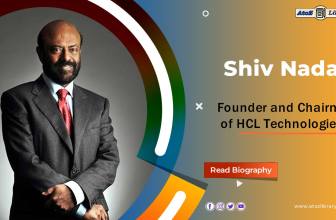
Know About Shiv Nadar: The Visionary Leader Who Transformed India’s Technology Landscape
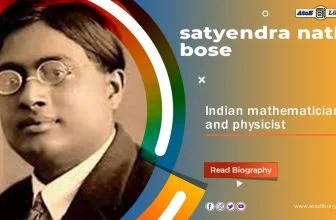
Satyendra Nath Bose Biography, Birth, Death, Education, Early Life And Invention
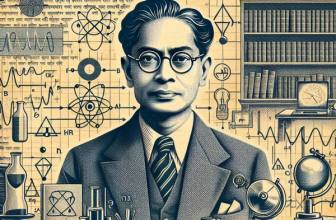
Biography Of Meghnad Saha an Indian Astrophysicist
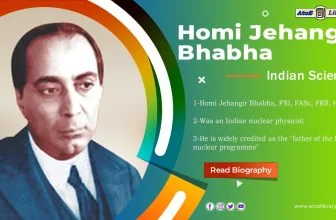
Biography of Homi Jehangir Bhabha: The Visionary Scientist Who Changed the World
continuously i used to reaad smaller articles or reviews that also clear their motive, and that is also happening with this piece of writing which I am reading at this time.
continuously i used to read smaller articles or reviews that also clear thei motive, and thatt is also happening with this piece of writing which I am reading at this time.
Leave a reply Cancel reply
Save my name, email, and website in this browser for the next time I comment.

- Photo Gallery
- World Records
- World History
- Indian Dance
- Indian Music
Kids Portal For Parents India Kids Network
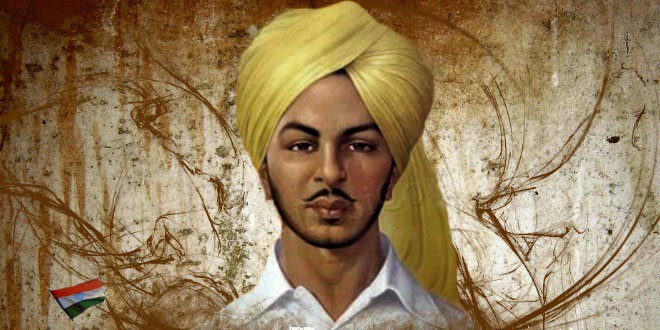
Bhagat Singh Biography For Students & Children
4to40.com March 21, 2021 Biographies for Kids 14,243 Views
| , Punjab, India | |
| Threw bombs in Central Assembly Hall, protesting on imposing severe measures like the Trades Disputes Bill by the Britishers. | |
| Went on hunger strike to protest the inhuman treatment of fellow-political prisoners by jail authorities. | |
| Sukh Dev and Raj Guru, he was awarded the death sentence. Cremated on the bank of the Sutlej in Ferozepur. | |
| Hanged in the early hours of . | |
| Ferozepur, Punjab. |
Bhagat Singh was born on September 28, 1907, in Khatkar Kalan, Punjab, in British India . His grandfather Arjan Singh, father Kishan Singh and uncle Ajit Singh, were all active in the freedom struggle.
While studying at the local D.A.V. School in Lahore, in 1916, young Bhagat Singh came into contact with some well-known political leaders like Lala Lajpat Rai and Ras Bihari Bose.
In response to Mahatma Gandhi ’s call for non-cooperation against British rule in 1921, Bhagat Singh left his school and joined the National College newly opened at Lahore. At this college, which was a center of revolutionary activities, he came into contact with revolutionaries such as Bhagwati Charan, Sukhdev and others. He became a member of the Hindustan Republican Association formed by the revolutionaries of Uttar Pradesh and was initiated into their firebrand activities.
The revolutionaries were branded as terrorists by the British government. They believed that given the unjust and oppressive nature of British rule, it was legitimate on their part to use violence as a weapon to overthrow the foreigners. So, they used bombs and guns against Britishers and robbed establishments belonging to the British or their sympathizers.
Their ideas differed from the Gandhian idea of a freedom movement based on non-violence or ahimsa. Gandhi’s ideas went on to become more prominent as the Indian freedom movement progressed.
But it is not merely as a bold militant-type figure that Bhagat Singh is remembered today. He was also a thinker who was steeped in the best traditions of socialistic thought, the theory that advocated collective or state ownership of the means of production – land, labour and capital. This is borne out in the numerous letters, pamphlets and articles that he wrote in the course of a short but turbulent life.
In a letter to an Indian publication, The Tribune of December 24, 1929, Bhagat Singh explained beautifully the meaning he and fellow socialists tried to convey by the phrase, Long Live Revolution. He wrote that by revolution, they did not so much mean violence, as “the spirit, the longing for a change for the better.” Since people generally get accustomed to the established order of things and begin to tremble at the very idea of a change, they needed to be roused from their lethargy and the revolutionary spirit had to be instilled in them.
A brutal attack by the police on veteran freedom fighter Lala Lajpat Rai at an anti-British procession caused his death on November 17 1928, in Lahore.
Bhagat Singh determined to avenge Lajpat Rai’s death by shooting the British official responsible for the killing, Deputy Inspector General Scott. He shot down Assistant Superintendent Saunders instead, mistaking him for Scott.
Then he made a dramatic escape from Lahore to Calcutta and from there to Agra, where he established a bomb factory.
The British government responded to the act by imposing severe measures like the Trades Disputes Bill. It was to protest against the passing of the Bill that he threw bombs in the Central Assembly Hall while the Assembly was in session. The bombs did not hurt anyone, but the noise they made was loud enough to wake up an enslaved nation from a long sleep.
After throwing the bombs, Bhagat Singh and his friend deliberately courted arrest by refusing to run away from the scene. During his trial, Bhagat Singh refused to employ any defence counsel.
In jail, he went on hunger strike to protest the inhuman treatment of fellow-political prisoners by jail authorities. Along with fellow comrades, Sukh Dev and Raj Guru, he was awarded the death sentence for his terrorist activities by a special tribunal on October 7, 1930.
Despite great popular pressure and numerous appeals by political leaders of India, Bhagat Singh and his associates were hanged in the early hours of March 23, 1931. Their bodies were cremated on the bank of the Sutlej in Ferozepur. Bhagat Singh was just 23 at that time. Old timers say that in many places, not a single hearth fire burned that day.
The last paragraph of the leaflet that he distributed (and wrote) in the Assembly Hall said: “We are sorry that we who attach such great sanctity to human life, we who dream of a very glorious future when man will be enjoying perfect peace and full liberty, have been forced to shed human blood. But sacrifice of individuals at the altar of the revolution will bring freedom to all, rendering exploitation of man by man impossible. Inquilaab Zindaabad (Long live the revolution).”
There was a time when the very mention of the name of the young revolutionary stirred the passions of most Indians. Today, the name evokes little emotion.
The method of remembering him, too, has become mechanical. The day Bhagat Singh was hanged is observed as Martyr’s Day , when the chief minister of Punjab makes a trip for a memorial function in Bhagat Singh’s memory. Needless to say, the politicians have used this occasion more for their ends.
And as for the children of the village, the high point for them is seeing the helicopter in which the chief minister travels.
Bhagat Singh continues to be martyred by the very people of the country whose freedom he fought for. And that is the biggest irony of all.
Bhagat Singh – Stock Photos
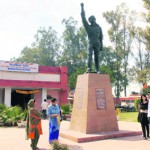
- Stumbleupon
Tags Freedom Activists of India Freedom Fighters of India Greatest Freedom Activists of India Greatest Freedom Fighters of India Greatest Revolutionaries of India India Famous Biographies India famous Freedom Activists Biography India famous Freedom Fighters Biography India Famous Revolutionaries Biography India Images & Videos India Personalities Biography India Popular Freedom Activists Biography India Popular Freedom Fighters Biography India Popular Revolutionaries Biography India Top 10 Freedom Activists India Top 10 Freedom Fighters India Top 10 Revolutionaries Indian Famous Personalities Life History of Freedom Activists Life History of Freedom Fighters Life History of India Freedom Activists Life History of India Freedom Fighters Life History of India Revolutionaries Life History of Revolutionaries Revolutionaries of India
Related Articles

P. T. Usha Biography, Early Life, Athletic Career, Awards
2 weeks ago
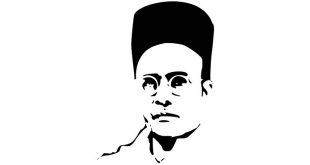
Veer Savarkar Biography For Students and Children
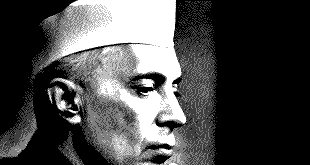
Jawahar Lal Nehru Biography For Students
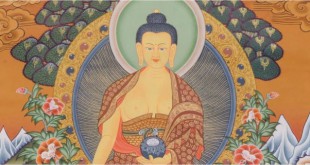
Gautam Buddha Biography For Students
3 weeks ago
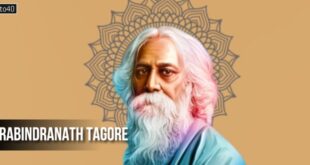
Rabindranath Tagore Biography For Students and Children
May 6, 2024
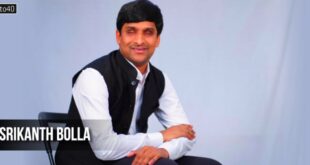
Srikanth Bolla Biography, Early Life, Education and Entrepreneur
April 15, 2024
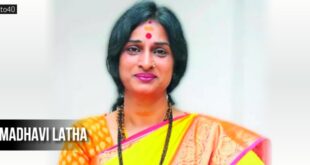
Madhavi Latha Biography, Early Life, Education, Films and Politics
Actress Madhavi Latha is a Telugu actress and Indian politician who appeared in Telugu and …

- Games & Quizzes
- History & Society
- Science & Tech
- Biographies
- Animals & Nature
- Geography & Travel
- Arts & Culture
- On This Day
- One Good Fact
- New Articles
- Lifestyles & Social Issues
- Philosophy & Religion
- Politics, Law & Government
- World History
- Health & Medicine
- Browse Biographies
- Birds, Reptiles & Other Vertebrates
- Bugs, Mollusks & Other Invertebrates
- Environment
- Fossils & Geologic Time
- Entertainment & Pop Culture
- Sports & Recreation
- Visual Arts
- Demystified
- Image Galleries
- Infographics
- Top Questions
- Britannica Kids
- Saving Earth
- Space Next 50
- Student Center
- Who was Bhagat Singh?
- How did Bhagat Singh die?
- What is the difference between a nation and a state?
- What is a nationalist movement?
- When did nationalist movements first arise?
- Where did Marxism come from?
- Why is Marxism important?
- How is Marxism different from other forms of socialism?

Why is Bhagat Singh important?
Bhagat Singh was involved in two high-profile plots against British authorities in India that helped galvanize the Indian independence movement . In 1928 he took part in a plot to kill the police chief responsible for the death of influential Indian writer and politician Lala Lajpat Rai . However, he and a coconspirator mistakenly killed the assistant superintendent of police, J.P. Saunders, and Singh fled the city of Lahore (now in Pakistan) to escape execution. In 1929, protesting against the Defence of India Act , he and an accomplice threw a bomb at the Central Legislative Assembly in Delhi before surrendering. While in jail, Singh helped organize a hunger strike to protest against prisoner mistreatment, a demonstration that gained him wide support in India. Nevertheless, he was hanged in 1931 for Saunders’s murder.
Related Questions

IMAGES
VIDEO
COMMENTS
Bhagat Singh (28 September 1907 - 23 March 1931) was an Indian anti-colonial revolutionary, who participated in the mistaken murder of a junior British police officer in December 1928 in what was to be retaliation for the death of an Indian nationalist. He later took part in a largely symbolic bombing of the Central Legislative Assembly in Delhi and a hunger strike in jail, which—on the ...
Bhagat Singh (born September 27, 1907, Lyallpur, western Punjab, India [now in Pakistan]—died March 23, 1931, Lahore [now in Pakistan]) was a revolutionary hero of the Indian independence movement.. Bhagat Singh attended Dayanand Anglo Vedic High School, which was operated by Arya Samaj (a reform sect of modern Hinduism), and then National College, both located in Lahore.
Bhagat Singh was born in Punjab, India (now Pakistan), on September 27, 1907, to a Sikh family deeply involved in political activities. He quit school at thirteen to devote his life to Indian ...
He died a martyr at the age of just 23 years. Following his execution, on March 23, 1931, the supporters and followers of Bhagat Singh regarded him as a "Shaheed" (martyr). Childhood and Early Life. Bhagat Singh was born on September 28, 1907, at Banga in Lyallpur district (now Pakistan) to Kishan Singh and Vidyavati.
Singh was executed by hanging on March 23, 1931, at Lahore jail at the age of 23. Despite his short life, Bhagat Singh left a lasting legacy in the struggle for Indian independence. He is revered by many as a martyr and symbol of resistance to British colonialism in India. His example continues to inspire new generations of activists worldwide.
Singh was born to Vidyavati Kaur and Sardar Kishan Singh, in a Sikh Jat family on 28 September 1907 at Lyallpur in Punjab Province of British India. His family had earlier been involved in revolutionary activities against the British government. His uncle, Swaran Singh, had participated in the freedom struggle against the British.
Bhagat Singh. Bhagat Singh (Punjabi: ਭਗਤ ਸਿੰਘ بھگت سنگھہ, IPA: [pə˨gət̪ sɪ˦ŋg]) (September 28, [1] 1907-March 23, 1931) fought an Indian freedom fighter, considered one of the most famous revolutionaries of the Indian independence movement. For that reason, Indians often refer to him as Shaheed Bhagat Singh (the ...
Bhagat Singh was a hero of the early 20th-century Indian independence movement. He was a vocal critic of British rule in India and was involved in two high-profile attacks on British authorities—one on a local police chief and the other on the Central Legislative Assembly in Delhi. He was executed for his crimes in 1931 at the age of 23.
Life of Bhagat Singh. Bhagat Singh was born on 28th September 1907 in a Jat Sikh Punjabi family to Kishan Singh Sandhu and Vidyavati Kaur. He was born in Chak no. 105 in the village of Banga, Jaranwala Tehsil in the Lyallpur district of the Punjab province of British India. Bhagat Singh's family is a patriotic family, the members of which ...
Early life of Bhagat Singh. Bhagat Singh was born on September 27, 1907, in Lyallpur, western Punjab, India (now in Pakistan). Bhagat Singh attended Dayanand Anglo Vedic High School, which was operated by Arya Samaj (a reform sect of modern Hinduism), and then National College, both located in Lahore. His family members were involved in the freedom struggle and he was drawn to the Indian ...
Bhagat Singh biography: Bhagat Singh was a revolutionary freedom fighter who was hanged to death by the Britishers at the age of 23 years. ... Get here current GK and GK quiz questions in English ...
Bhagat Singh Biography. Birth: Bhagat Singh was born on September 28, 1907 in the village of Banga in Lyallpur district (present-day Faisalabad, Pakistan). Death: He was hanged for murdering British police officer John Saunders in 1931, at the age of only 23. Politically Active: Both Bhagat Singh's father Kishan and uncle Ajit were politically active against the British.
Singh, Bhagat, 1907-1931, Revolutionaries -- India -- Biography, India -- Politics and government -- 1919-1947 Publisher New Delhi : HarperCollins Publishers India, a joint venture with the India Today Group Collection internetarchivebooks; inlibrary; printdisabled Contributor Internet Archive Language English
family member of Bhagat Singh, his nephew Dr. Jagmohan Singh (the son of Bhagat Singh's sister-—Bibi Amar Kaur) : Sardar Fateh Singh participated in the Anglo-Sikh wars in the 1840s, which led to the confiscation half of his landed property. During the 1857 upsurge, the British Commissioner of Punjab Sir John Lawrence wanted to
manishsiq Published On March 28th, 2024. Table of Contents. Bhagat Singh (1907-1931) was a charismatic Indian revolutionary who is considered one of the most famous and iconic figures in the Indian independence movement. He was a staunch advocate of socialist and communist ideals, and he believed in using violence to achieve independence from ...
Bhagat Singh Death Date is March 23, 1931, in Lahore, which is now in Pakistan. His death occurred as a result of his execution by hanging. Bhagat Singh willingly embraced martyrdom for the cause of India's freedom from British rule. His sacrifice continues to inspire people, and the date of his death, March 23rd, is observed as Shaheed Diwas ...
Bhagat Singh was a zealous revolutionary of the Indian freedom struggle who made the ultimate sacrifice trying to deliver his motherland from the chains of slavery. He was martyred at a very young age of 23, along with two of his fellow revolutionaries and convicted by the British government of assassinating John Saunders - a British police ...
Early Life And Education. Bhagat Singh was born on September 28, 1907, in Banga, Punjab, India, into a Punjabi Sikh family that was politically active and had a history of involvement in the independence movement. His father and uncle were both prominent independence activists, and he was exposed to revolutionary ideas from a young age.
Ferozepur, Punjab. Bhagat Singh was born on September 28, 1907, in Khatkar Kalan, Punjab, in British India. His grandfather Arjan Singh, father Kishan Singh and uncle Ajit Singh, were all active in the freedom struggle. While studying at the local D.A.V. School in Lahore, in 1916, young Bhagat Singh came into contact with some well-known ...
#bhagatsingh #freedomfighterThis video is a brief introduction to Bhagat Singh's Journey and sacrifices for India's freedom. Bhagat Singh was the youngest an...
Bhagat Singh was involved in two high-profile plots against British authorities in India that helped galvanize the Indian independence movement. In 1928 he took part in a plot to kill the police chief responsible for the death of influential Indian writer and politician Lala Lajpat Rai. However, he and a coconspirator mistakenly killed the ...
Bhagat Singh, the stories Of Bhagat Singh In English told by Amar Chitra Katha Stories.Do visit our ACK app at: bit.ly/AckComicsYou may also be interested in...
Biography Of Bhagat Singh by M M Juneja. Publication date 2008 Topics Biography, of, Bhagat, Singh Collection namdhari; additional_collections Language English. Biography of Bhagat Singh Addeddate 2021-05-08 09:21:55 Identifier biography-of-bhagat-singh Identifier-ark ark:/13960/t8md9v08b Ocr tesseract 5.0.0-1-g862e ...
Bhagat Singh Koshyari (born 17 June 1942) is an Indian politician who served as the 22nd governor of Maharashtra from 2019 to 2023. An RSS veteran, Koshyari served as National Vice-President of BJP and party's 3rd State president for Uttarakhand. He also served as 2nd Chief Minister of Uttarakhand (formerly Uttaranchal) from 2001 to 2002 and thereafter, was the leader of the opposition in the ...
Ustaad Bhagat Singh is an upcoming Indian Telugu-language action drama film directed by Harish Shankar and produced by Naveen Yerneni and Y. Ravi Shankar, under the banner of Mythri Movie Makers.The film stars Pawan Kalyan as the titular character alongside Sreeleela, Ashutosh Rana, Nawab Shah, B. S. Avinash, Gauthami and Chammak Chandra.It is a remake of the 2016 Tamil film Theri.